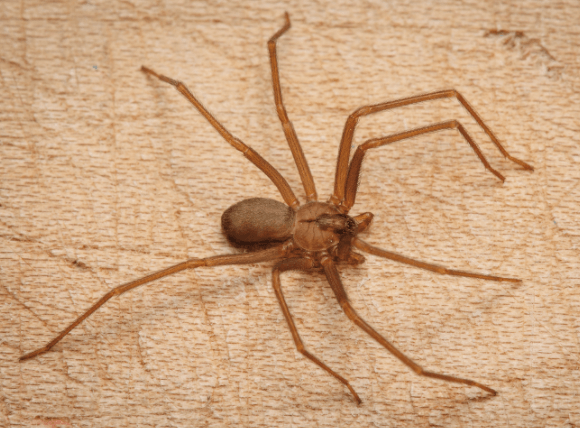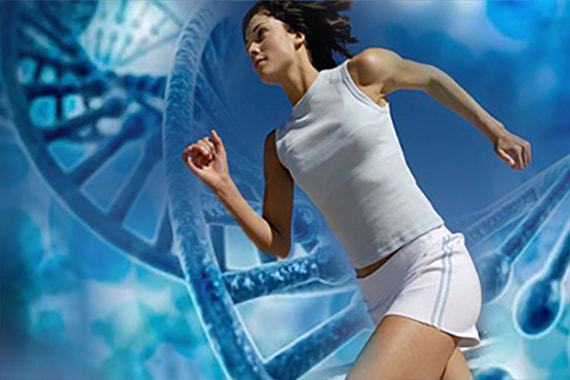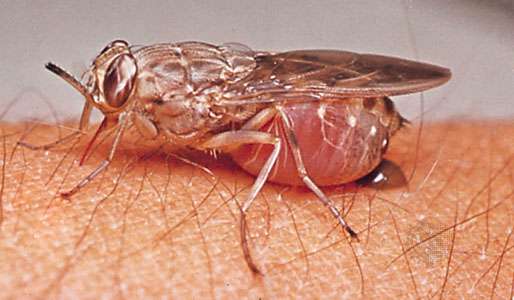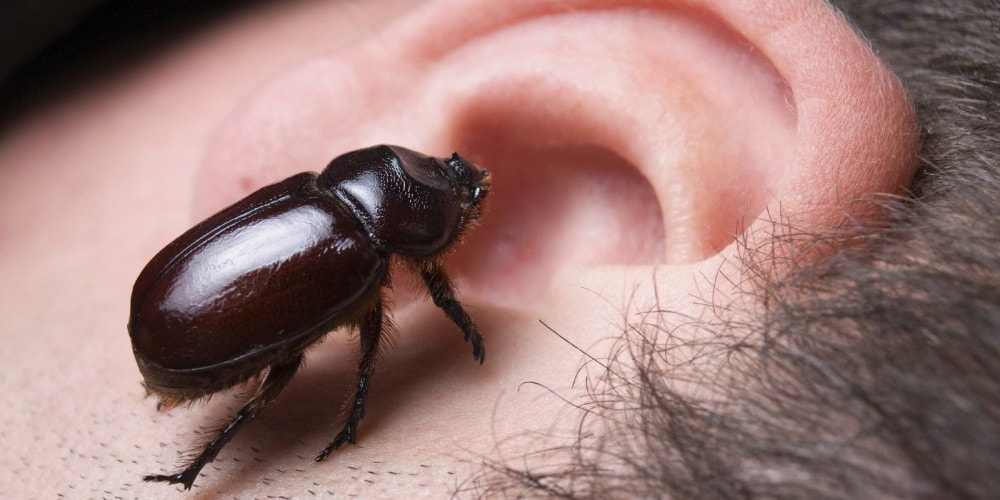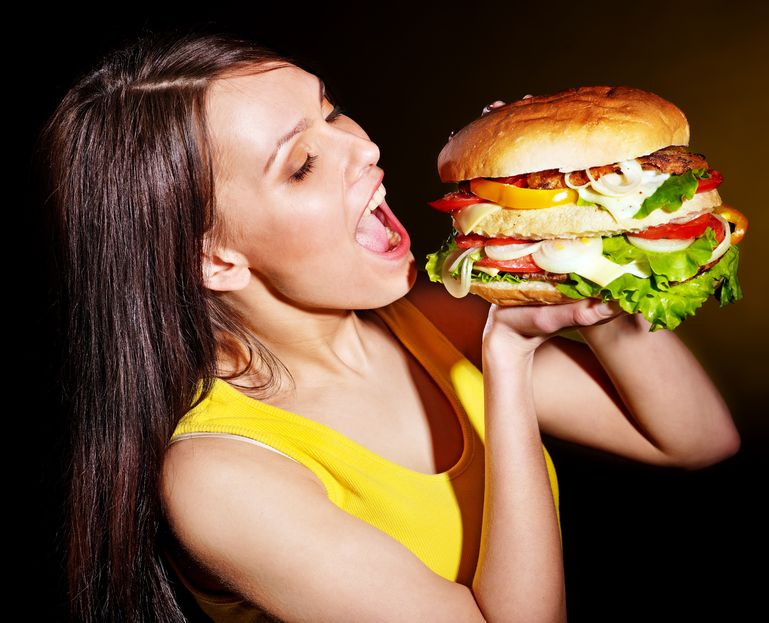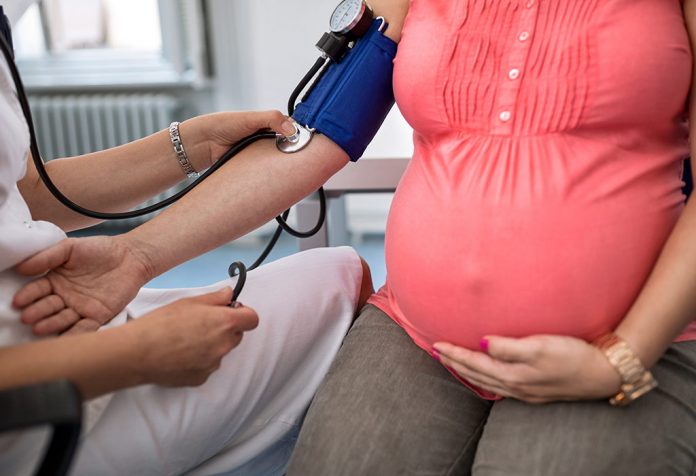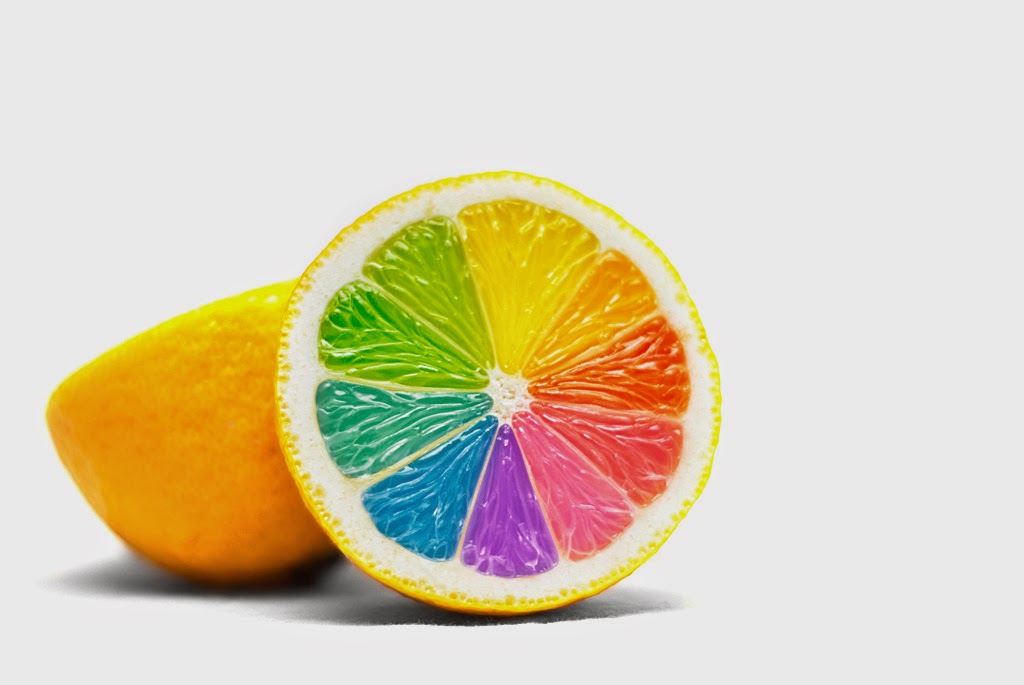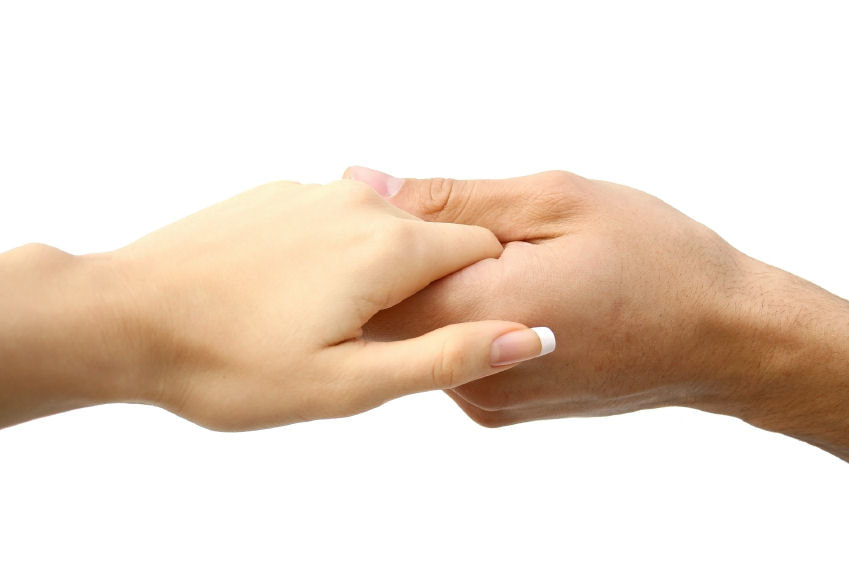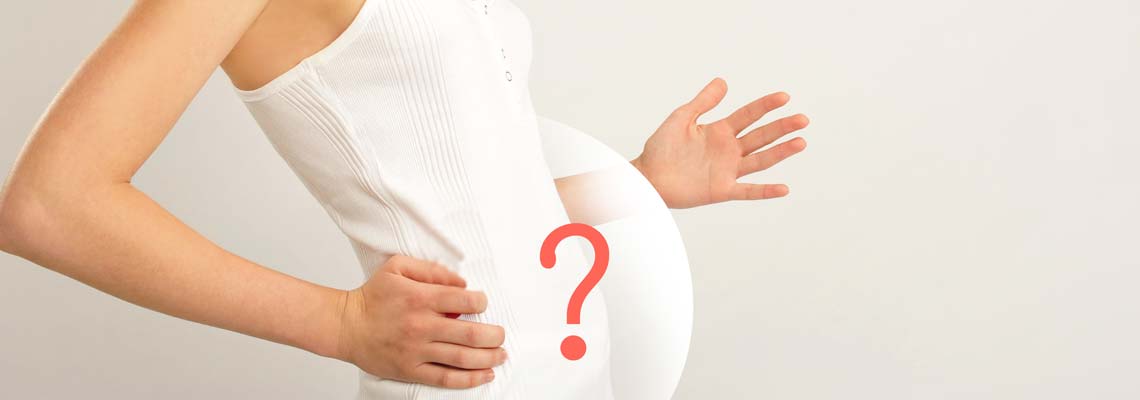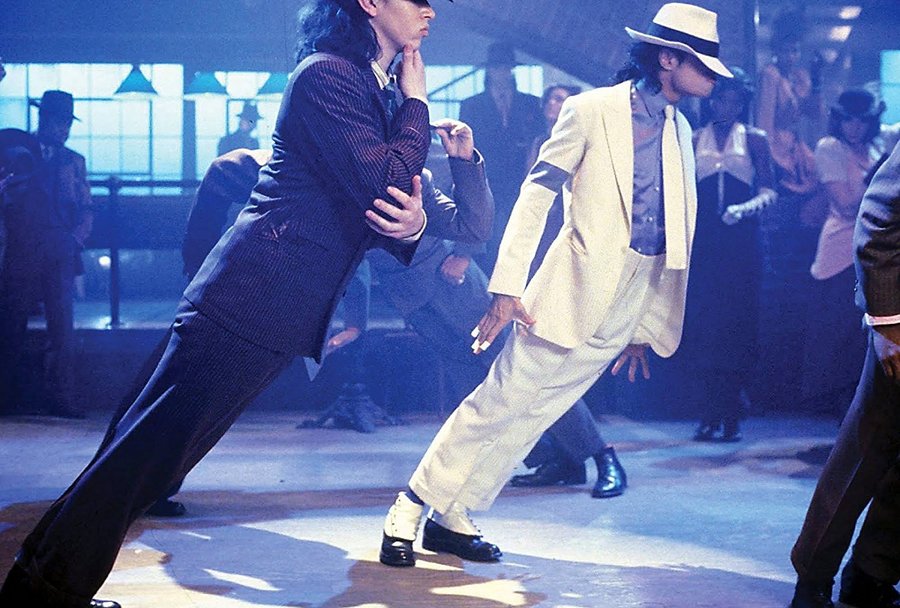|
How does it sound when a healthy ageing adult wishes for assisted-suicide as his/her birthday gift? Terrifying? Haunting? Sad? But this is the reality in today’s world where many old-age couples wish to end their lives while they are still happy and healthy as they fear loneliness or terminal illnesses that might strike them anytime. Euthanasia Euthanasia is helping a terminally sick person to end his/her life to relieve him/her of suffering. This is a critical issue that garners extremely different views from people worldwide as every person’s view on life is different. A controversial and emotive topic, passive euthanasia (2 types exist) is legalized in India since March 2018 under rigid guidelines only when the patient is terminally ill or in a vegetative state. Let’s assume that your family doctor knows you for years together, has witnessed your physical/mental deterioration as you age and feel pitiable for your living. At this juncture, if this physician prescribes terminal illness drugs that are in practice not needed for your comfort (for example, sedative overdose or muscle relaxant) but prescribed with the only aim of ending your life, it is euthanasia, active euthanasia. But if the same doctor assists you in committing suicide or encourages you to commit suicide at your request, it is assisted suicide. It might even be your friend who purchases strong sedatives to help you end your life at your request. He/she is assisting you in your suicide venture and this too falls under the same category. Sometimes, people withhold or withdraw treatments needed for maintaining life which can result in death of the patient and this is called as passive euthanasia. Patients themselves most of the times feel like giving up on living and wish for a peaceful death. In such cases, they request for voluntary euthanasia. Some other times, it is the family members of terminally-ill or ‘vegetative state’ patients who request for mercy killing as defined as involuntary euthanasia. Thalaikoothal Parents who introduce us to this world become dependent on us for life as they age. They are left to plead and seek mercy from their sons, daughters, sons-in-law and daughters-in-law to be spared to live. Thalaikoothal is the illegal and traditional process of geronticide or involuntary euthanasia forced by family members over their elderly relatives which is commonly practiced in some parts of southern districts of Tamil Nadu. While reasons cited by the person performing the euthanasia is generally terminal illness, suffering or physical pain, the process is performed even due to greed of money, dispute between siblings for acquisition of will and many things more. Motivating Factors for Euthanasia While extreme pain is the first reason that strikes us when someone prefers euthanasia, there are other reasons that serve as equal contributing factors. Terminal illness that robs a person of his/her quality living due to conditions such as nausea, incontinence, vomiting, paralysis or swallowing difficulties and psychological factors such as depression, loss of control or dignity, feeling a burden or uninterest in leading life as a dependent are other strong factors that motivate a person to seek euthanasia. Assisted Suicide Assisted suicide is legal in Switzerland, Germany, Japan, South Korea and in the US states of Washington, Oregon, Colorado, Hawaii, Vermont, Montana, Washington DC and California. Society today forces both parents to work in order to match expenses and the elderly people are left at the mercy of domestic aids or worse, themselves, for food and attention. This has pushed many healthy ageing couples to come forward and seek permission for assisted suicide to end their lives gracefully without much pain. Some other elderly people are tired of living, have lost the desire to explore life or feel it a pain to even do their daily chores and hence, choose such dying options. An Australian scientist, David Goodall, travelled to Switzerland to end his life via assisted suicide at the age of 104. Though not terminally ill, he was left with limited mobility, failing eye sight and had no desire to live anymore. Illegalization of euthanasia in countries force such citizens to undergo the pain of travel to end their lives! 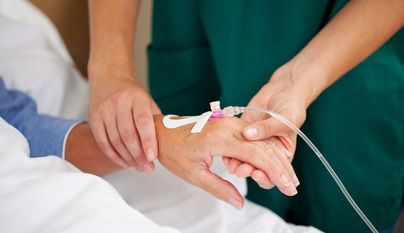 Doctors Who Give Life are Made to Take Life Off the Person Doctors Who Give Life are Made to Take Life Off the Person A couple in Mumbai, India have sent a petition to the President of our country seeking permission for assisted suicide despite the absence of terminal illness or pain in either of them. The couple wish for this as they are satisfied of leading a fulfilled life and fear that either of them might pass away which would lead to mental agony, pain and dependency for the other. Is life so simple that we want to end it for such trivial reasons or are we the ones complicating it by forcing people to live without any interest in life? Situations might differ, opinions might vary and the reactions could be harsh, but the reality now is that more and more people wish for assisted suicide in all parts of the world! Arguments For & Against Euthanasia & Assisted Suicide Each of us have an opinion and like to raise our views/concerns on general subjects. What are the various reasons quoted by people for supporting or disapproving assisted suicide? For
Coughing occasionally during winter, after getting drenched in the rain or affected by common cold are common causes of coughing and no one cares! Let the cough last for more than a week and you start taking some medication or trying home remedies as treatment. When the same cough remains for more than 3-4 weeks, it becomes a matter of concern and panic arises in the individual. Nowadays chronic coughing makes the individual worry about heart disease and cancer!
Cough A cough can be a reflux one, consciously done or a voluntary act that starts with a gasp that sucks air into the lungs. Is there anyone who has never coughed? There can be none at all! Everyone coughs and none of us bother about it until it is an occasional one caused due to acute illnesses such as hay fever, common cold, bronchitis or pneumonia which resolve in a couple of days. On the contrary, a chronic cough lasts for few weeks, months or even years together. Coughing is as common as sun and moon, but chronic cough interrupts our daily activities, sleep, causes fatigue, affects job performance and we lose the ability to focus on the work at hand. We live in an era of scary viruses and social interactions become greatly affected due to persistent coughing. Moreover, coughing affects a person physically too in the form of urinary incontinence, fainting and broken ribs. Severe chronic cause can even cause vomiting, lightheadedness and rib fractures sometimes. But the entire episode of chronic coughing vanishes away once the underlying problem is diagnosed properly. Chronic cough can occur along with other symptoms such as runny nose, a sensation of liquid running down the back of your throat (postnasal drip), frequent sore throat, wheezing, breathlessness, heartburn, sour taste in the mouth and rarely, coughing up blood too happens. Common Causes of a Chronic Cough Any physician would spontaneously quote smoking as the leading cause for chronic cough. It starts as a simple chronic cough but can lead to far serious conditions such as bronchitis, emphysema, pneumonia and lung cancer which becomes a matter of concern for chain smokers. While there are numerous conditions that can cause a chronic cough, five conditions top the list and include:
A chronic cough isn’t all that serious until you experience symptoms such as fever (consistently high or prolonged), shortness of breath, weight loss, night sweats, wheezing, weakness, fatigue, chest pain that’s not due to the cough itself, coughing up blood, copious sputum production and loss of appetite which immediately calls for a physician’s attention. Although not dangerous mostly, when you cough persistently it can land you in various problems including disturbed sleep, dizziness, excessive sweating, fractured ribs, urinary incontinence and passing out too! A cough might be ‘dry’ or ‘wet’. A dry cough does not produce mucus and is predominantly visible in people who smoke and use ACE inhibitors whereas a wet cough produces mucus or sputum and is visible amongst people using a postnasal drip or having cystic fibrosis. Diagnosis & Treatment The doctor begins the diagnosis by questioning on the patient’s initial symptoms, time of appearance of the cough, what makes the cough better or worse and also about the patient’s history and lifestyle habits (mainly for smoking). Sometimes, the doctor suggests the patient to go for a bronchoscopy (lung view to check for irritation or disease), imaging scan or sputum sample test to check for any complications. Treatment depends on the underlying cause. Doctor suggests decongestants or antihistamines for treating postnasal drip, lifestyle changes for GERD that include going to bed two hours post-meal, eating several small meals and sleeping with your head in a raised position, antibiotics, cough suppressants, inhaled-asthma drugs and acid blockers. Home remedies that can be easily practiced by most people include sucking on cough drops, using a vaporizer to steam and drinking warm liquids such as warm water, tea, coffee or hot soup.  Hang the Bananas! Hang the Bananas! Gone are the days when our mommies and daddies went to the market early in the morning and purchased the required produce for the day’s meals. Such freshly purchased veggies and fruits not only taste great but also save time and effort consumed in storing them. Ironically, these days people don’t even go to market to buy vegetables but order everything online, right from your greens, herbs and spices to the daily produce required for cooking. Even on occasional visits to the farmer’s market or vegetable shop (which is mostly during the weekends) they purchase produce that lasts for more than a week! So, is there an option to keep them fresh or at least prevent them from rotting away inside the comfort of the refrigerators? The vegetable/fruit vendor is always the scape goat who gets blamed for rotten produce that stales away inside our refrigerators before we get a chance to use them. What we miss out is that, every fruit or vegetable has its own qualities. Some fruits give off ethylene gas that can make the other produce ripen and rot faster than it can be consumed. Apricots, avocados, papayas, nectarines, tomatoes, banana, cantaloupe, mango, honeydew melons, peaches, pears, plums, tomatoes and kiwis are the most-common ethylene-producing fruits that must be kept far away from ethylene-sensitive produce such as apples, asparagus, green beans, cucumbers, broccoli, carrots, eggplants, lettuce, potatoes, summer squash and watermelons. Mostly, it is due to improper storage techniques that produce rot away rapidly. Each produce must be stored in a different manner to retain its authentic nutrient qualities. Such careful storage techniques become even more critical when we try to store multiple produce together in the refrigerator. Be the Perfect Host to Your Produce Generally, produce can either be stored on the counter, inside the refrigerator at 40° F or placed on the counter to ripen and then stored inside the refrigerator. Few common mistakes or issues that can affect freshness quotient of produce include:
At room temperature: Bananas, basil, cucumber, eggplant, grapefruit, Beans, potatoes, oranges, lemons, sweet potatoes, Watermelon, tomatoes, zucchini At room temperature but move to the fridge once ripe: Apricots, avocados, papayas, peaches, pears, nectarines, melons, kiwi, mangoes, pineapples, plums Refrigerate: Apples, asparagus, blueberries, corn on the cob, cauliflower, cherries, cilantro, Broccoli, Brussels sprouts, carrots, Dark leafy greens, grapes, leeks, peas, parsley, lettuce, pomegranate, strawberries The job doesn’t end here and we need to clearly understand ‘how’ to store produce as well. In general, remember to store high-ethylene-emitting fruits away from other produce. But, the same set of fruits can also become advantageous when we wish to ripen certain produce faster. For example, if you want to ripen your avocados, you can place them inside a paper bag and keep them right next to the bananas. You would be amazed to find ripe avocados sitting right next to the bananas ready to be used in your smoothies, as a spread or to make some yummy dessert. So, ‘how’ to store your favorite produce? Garlic & Onion: Garlic and onions gel well and bond together as they are both part of the allium family. There is no harm in storing them right next to each other in open containers in a cool, dry and dark space. 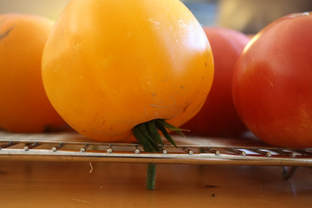 Are the Tomatoes Shy to Show their Face? Are the Tomatoes Shy to Show their Face? Mushrooms & Okra: Keep them unwashed in paper bags inside refrigerators as moisture makes them slimy and rot away. Tomatoes: Most of us are inclined to pack any produce into the refrigerator and tomato too faces the same challenge. It is advisable to store them at room temperature (in a bowl away from heat and light) away from the cooling air inside the fridge to prevent quick rotting of the produce. It is even better to keep the stem side down as this prevents moisture from accumulating around the stem and spoiling the entire tomato. 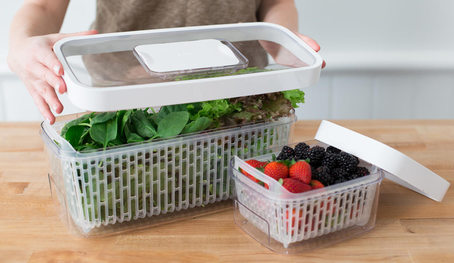 Don't Hurry While Storing Berries Don't Hurry While Storing Berries Potatoes: These stay happy at room temperature. Place potatoes in a cool, dry space in your kitchen but far away from onions or apples (any fruit that emits ethylene) as this can make them wilt and sprout quickly. You can surely grow your own potato garden with the small sprouts that appear on these root veggies if they stay together with onions, even by mistake! Carrots: These have a longer shelf life and can stay fresh up to 2 weeks when placed in an unsealed zip-lock bag in the crisper drawer of the fridge. Peas: Store them in plastic bags Cucumbers: Avoid storing them in fridge but if the need arises never refrigerate them beyond three days. Place them in the front portion of the shelf wrapped in paper towels (you can keep these wrapped ones inside a plastic bag) where the temperature is pretty warm. Leafy greens: Firstly, remove any rotten leaf from the greens before storing and place different greens in different bags. Wrap the leafy greens in paper towels and put them into plastic bags. Banana: You can place them on the counter or use banana hangers to prevent the fruit from ripening too much Berries, cherries and grapes: Any of these fruits must never be washed until you find it essential to use them. Keep them dry in covered containers inside the refrigerator. Citrus fruits: All kinds of citrus fruits can be stored in the crisper drawer or in a mesh bag in the refrigerator. Stone fruits: Plums, peaches and nectarines must be placed in a paper bag on the counter until they ripen and then stored inside the refrigerator. Melons: Watermelons must be stored outside in a cool, dry place. Cantaloupes and honeydews can also be kept outside until they are cut. Herbs: Herbs can be preserved just like flowers, keeping them in a vase filled with water. Before doing that, you can wash them, dry them and cut off the ends. You can even cover the top portion of the herbs with a plastic bag or a damp paper towel as this absorbs moisture. Washing your produce is an art that needs to be mastered. This helps to get rid of as much pesticides and dirt as possible. You can get a list of the top 10 dirtiest and cleanest produce from the website www.firsteatright.com. So, store your produce the right way and wash them properly to enjoy a hearty meal with the essence of fresh and healthy ingredients. This is economical and saves your time too! None would be unaware of the infamous story ‘The King & The Spider’ where a spider’s perseverance taught a much-needed lesson for the king. Such famous are these arthropods that there are more than 40,000 species of spiders identified worldwide and real numbers are estimated to be 4 times more than this number presented here. All of these are predators that feed on insects and other tiny animals. Spiders are air-breathing arthropods (largest species collection) that are diversely found ranking seventh in total species diversity. Mistaken Identity Just like lizards and cockroaches, many of us are scared of these eight-legged creatures but spiders rarely harm humans or bite them unless threatened. No spider attacks a human for some reason, all the more bite someone. They inflict pain only when an individual accidentally harm it or when the spider misinterprets the person’s movement with that of a prey. History shows that there is only one aggressive spider till date, the funnel-web in Australia, which attacks humans without any reason or provocation. Spider ‘Byte’ Each of us would have come across or been victims of spider bites sometime in our life. Most of these bites are harmless, many of them blamed on spiders seem to have been inflicted by other bugs and sometimes, skin infections have also been mistaken for spider bites. Tiny might be the species, but its bite can rarely be extremely dangerous and damaging. Spiders have hollow tusk-like jaws connected at the base with poison glands that produce toxins delivered by the jaws. Amongst the 40,000+ species, few of them can penetrate human skin and even if they do so, most of these possess toxins that have little or no effect on humans. Rarest of the rare species have both the abilities-penetrating through the human skin and disposing toxic venom-together that can cause serious human disease. The severity of reaction to spider venom depends on numerous factors such as the quantity of the venom injected, site of bite, duration, age and health conditions. Victims of spider bite experience pain and swelling in the site of biting, necrosis, respiratory distress, kidney dysfunction, hypertension and death. Some of the world’s most poisonous spiders and the available treatments are discussed here: Brown Recluse Spider Characterized by a violin-shaped marking on its back, this spider is a nocturnal creature that rests mostly during the daytime. Individuals wearing clothes or shoes displaying spiders are bitten. The bite is painless, but the degree of pain increases in a couple of hours manifesting as inflammatory, hemorrhagic and painful lesions. Antivenoms dispensed decrease the size of the necrotic area and faster they are dispensed, minimal is their manifestation. Recommendations are to dispense these antivenoms within first 4 hours of the bite, but certain investigations seem to find them useful even after 12 hours. The spiders are names so because they like to hide away in undisturbed areas and prefer to live indoors, for instance, amongst the clutter of basement or attics, behind bookshelves and dresses and in unused/rarely used cupboards. Outside, they choose their quiet spot underneath rocks or tree stumps. 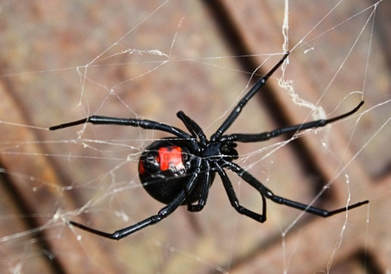 Black Widow Spider Stings Causes Extreme Abdominal Cramps Black Widow Spider Stings Causes Extreme Abdominal Cramps Black Widow Spider One amongst the famous venomous spiders, black widow spider has a black hairless body and commonly found in North America and Australia. The entire body is pitch black with the exception of a red marking, in the shape of an hourglass, on the abdomen. The bite hurts minimally, similar to a pinprick. This spider bites during the warm summer months and mortality rates are as low as 1%. But rarely, especially in children, the bite of a dark widow or brown recluse spider results in death. Symptoms include abdominal cramping, sweating profusely, fever, chills and body aches. Rarely the cramps can be such intense that they are mistaken for appendicitis or a ruptured appendix. Sometimes, the central portion of the bite turns dark blue or purple and emerge as an open sore (ulcer) that grows in size as the surrounding skin dies. The ulcer growth stops within 10 days after the bite, but complete healing takes months together and high degree of severity might result in grafting the affected site. Treatment consists of using muscle relaxants, narcotics, analgesics and antivenom. 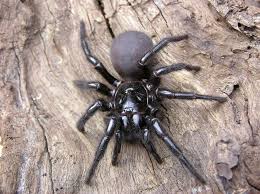 Funnel-web Spider: The Most Dangerous One Funnel-web Spider: The Most Dangerous One Funnel-web Spider The most dangerous spider in the world, this spider is aggressive even in the absence of provocation. The web formed by this spider is funnel-shaped and hence the name. Pain, hives, diaphoresis and piloerection are local symptoms. A funnel-web bite can cause drooping eyelids, double vision, swallowing difficulty, rapid heart rate, breathing difficulty, joint pain, muscle spasms, shivering, headache, coma, diarrhea, nausea and vomiting. Hives can irritate a person due to itching and also sting them. Read more on hives, their causes and treatments at www.firsteatright.com. Treatment includes bandaging for blocking lymph nodes, limb immobilization and taking the affected person to the hospital as fast as possible. Antivenom must be given immediately after hospitalization along with other measures such as ventilatory support and tetanus vaccination. General Treatment A spider bite might produce a reaction similar to that of a bee sting and result in redness, pain and swelling. Treat spider bite by:
Most of you would be tired of the tried and tested de-stressing techniques such as yoga, meditation and deep-breathing exercises by now and would be hoping for livelier and ‘happening’ techniques. Even after trying out these techniques people are still stressed, and the stress level is only steadily increasing! There is no hard and fast rule that you need to adhere to only certain techniques that is practiced universally. If some technique works for you but not your friend, go ahead and enjoy its benefits.
Given here are some well-researched ways that have proven to be effective on certain people and you might be one of them: Watch a swimming fish Countless homes have a small aquarium tank, but rarely do they observe what’s happening inside it. One journal study has seriously claimed that looking at a fish inside a tank can calm you and induce serenity. Not only that, even looking at a fishless tank with moving seaweed can help you settle your stress levels. Go green Having a garden inside the house might not be practically possible for everyone. But, one can definitely grow a small houseplant to make your house greener. One study has proved that women felt an uplift in their moods and their stress levels too dropped when they looked at a bunch of fresh rose for just three minutes. Select a small flowering or an ornamental plant of your choice and keep it in your house to feel fresh and energized. Become a sniff dog At times of stress try sniffing your spouse’s clothes, chest or even socks. It might sound crazy or even gross, but women do find it relaxing and smoothening to smell their partner, even when they are not physically present. During periods of separation, increased stress levels or high-importance meetings it is always better to carry your spouse’s hanky or socks to smell and de-stress yourself! Smile Smiling is an evergreen way to decrease your stress levels. Even during times of distress forcing a fake smile would serve you better than totally avoiding a smile. It makes you happier and truly less stressed. If you are that “authentic” person who cannot fake a smile, the best way is to call upon a friend and talk to him/her who can make your lips curl into a bright smile in no time! Stare at fractals Modern art has got charm in its own way. Fractals are geometric figures that keep occurring repeatedly, but every time in a smaller scale. Seashells, mountains, snowflakes and clouds are natural fractals and the good thing is that fractals can also be created via art. This explains the soothing power of nature on humans and it serves you good to add some picture of modern art to your phone’s background. Puppy love Any animal lover would surely accept that locking eyes with pet can take off his/her stress intensity and burden. Even research proves that human-animal bonding generates oxytocin (the love hormone) and reduces psychological distress. It is not only dog but any animal that can help a person calm down. For instance, one study gave crickets (insect) to elderly population to take care of and the mental health of the study group improved considerably by the end of the study compared to the other group devoid of any pets. If you don’t find yourself in a position to adopt a pet of your own, you can volunteer yourself to work in animal shelters. Bite on dark chocolate Studies have proved that eating dark chocolate helps reduce stress levels and blood pressure levels as effective as prescription drugs. Antioxidants (polyphenols) present in these dark chocolates are responsible for these healthful benefits and the darker the chocolate, more the polyphenols it contains. The different opinions surrounding dark chocolate never vanish and for some interesting tit-bits about this mouth-watering delicacy, please visit the website www.firsteatright.com. Chew & Chew Apart from preventing bad breaths, we should chew to beat stress too. One journal study proved that people who undertook a stressful task chewing gums felt less stressed than those who performed the task without the gums. Chewing gums contain the stress hormone cortisol and this triggers activity in people and helps them deal with stressful situations in a better way. Researchers feel that it might be due to the increased blood flow to the brain as a result of chewing. For every physical trait or personality of ours, we have our genes to credit or blame upon. We might be our parents’, grandparents’ or forefathers’ replica or possess traits resembling them, but each of us have something unique to us and only us, and this is personal choice. With sheer willpower and effort, we can overpower most of these traits (except for physical traits and there is no need as well to change one’s physical self just for the sake of beauty!) to become a better person, health-wise and personality-wise, in life.
Human Genome Scientists made wonderful progress studying the human genome more than a decade ago. This helps us relate genetics to certain diseases and disorders. Subsequent research proved further links between genetics and our increased risk of health problems such as Alzheimer’s, heart disease, breast cancer, depression and obesity too! Many over-smart individuals now use this theory to mint unethical money by luring people to take up genetic tests for obesity. These individuals overcharge common man for the test and come up with fancy terms and high-profile words to provide justification for the high cost. But finally, the solution provided by them is the same-work out, eat smart and live healthy. What is the need for genetic testing in this case? Genes do play a role, but we have a long way to go before we can provide substantial solutions to obesity problems using gene knowledge. At the same time, Angelina Jolie took a bold decision of getting her ovaries removed and saving herself from ovarian cancer (unlike her mom who succumbed to death at the age of 56) after witnessing more than a couple of her family members die due to cancer. Genes have indeed saved Angelina Jolie her precious life! There is a gene named after her, ‘The Angelina Jolie Gene’, information about which is available at www.firsteatright.com. On the brighter note, it is becoming more and more clear that genetics is only 50% of the cause for various ailments and it is our lifestyle that plays the hero role in reducing our risks of various diseases. We can never rewrite our genotype, but it is always possible to alter our phenotype. Epigenetics is the study of heritable changes in gene expression that don’t involve any changes to the underlying DNA sequence. Ongoing research is favorable to human species as we are finding that epigenetic changes are affected by our lifestyle choices, food habits, chemicals that we are exposed to and even our social environments. All these can modify our health at the level of the gene. Inherited Heart Disease Different types of heart disease can be passed down through families. Some are caused just by one or two genetic changes that have a powerful effect in causing the disease. But mostly, it is the result of multiple gene changes that result in coronary artery disease. Greater the number of gene variants, higher is your risk of disease as every variant increases your risk by 10%. Exercise Vs Genetics New research proposes that exercise, specifically cardio fitness, can outweigh genetics in affecting the risk of heart disease irrespective of the risk potential. The study included almost a half-million participants who were between 40 and 69 years old from 2006-2010. Researchers followed up on individuals who did not show any signs of heart disease for about a decade tracking their activities and exercise patterns. They investigated the genetic profile of those participants who were at the greatest risk of heart disease and atrial fibrillation. These participants were put on a rigorous cardiorespiratory fitness routine that decreased their risk of coronary heart disease by 49% and AFib risk by 60%. This proves three important facts:
Save Your Gene The fact that lifestyle affects genes to a great extent is good or bad depending on how we process this information. Those blessed with a genetic advantage against heart disease risk can revoke all these benefits by pursuing an unhealthy lifestyle. At the same time, genetics can even demotivate the most physically fit person when results show that the person is at the greatest risk of heart disease due to genetics. It can make the person feel doomed, negative and helpless. He/she completely forgets about his/her fitness level and focuses only on the gene results right then. This can cause stress, anxiety and ultimately raise blood pressure which is a major cause for heart disease. We sometimes complicate our simple lives by introducing unwanted elements into it. Understanding that genes depend on our activities and reminding that we don’t rely on genes for survival is the basis for a stress-free and healthy life. Family history is definitely a primary factor to consider but we can overpower it with significant lifestyle modifications. We live in such a modern world that individuals can actually get to know their risk status which is both a blessing and a curse. It solely depends on us to raise our blessings by taking appropriate actions to move forward in life (in terms of health), decrease our curse by using the results in a positive way to become better and stay balanced between both. Our Biology lessons on genes, inheritance and heredity always start with Drosophila Melanogaster or the common ‘fruit fly’. Its more than a century and the Drosophila continues to occupy a key role in science research in the areas of genetics, enlighten various aspects of human health and diseases. With tremendous scientific advancements, it keeps a person wondering what is extra-special about the fruit fly that encourages scientists to repeatedly use them despite profound development in research tools.
Are We Biased in Choosing the Drosophila for Research? Using humans for research is terrorizing and next to impossible due to multitudinous ethical and practical issues. To satisfy the requirements of a study, a good model organism should comply with similar functions and pathways with humans on a molecular level. We use model organisms such as mice and fruit fly to study about cell functioning and genetics. Although agreeable that humans and fruit flies are dissimilar organisms, it is also surprising that the biological pathways and mechanisms overlap between these species. The well-known journal Science listed the genome sequence of Drosophila which in comparison to the human genome shows these key facts that make this insect a model specimen in science labs:
The similarity between the genome structures of humans and drosophila are critical for using the fruit fly to better understand human behavior, development and genetic diseases. The different human conditions and behaviors for which Drosophila has been used might surprise and fascinate any human. Genes nowadays are used to predict a person’s weight loss/gain ratio, but this still remains a field to be further explored and analyzed before coming into definitive conclusion. Read more on nutrigenetics/nutrigenomics and the impact of genes on health and weight from the website www.firsteatright.com. Currently under study are genes linked to neurological diseases, cancer, hypoxic response, infectious diseases, etc. The fruit fly is emerging to be a critical research element in the clinical drug discovery process and is a potential model for wound healing. In the bioengineering domain, Drosophila embryos are utilized to test the safety of bioengineering technologies. New therapies to treat heart diseases will be a reality in the near future for which the research is already underway. All these together make Drosophila the numero uno choice of scientists for research purpose. Crash diets crush your health and leave you with debilitating side effects. There were certain articles and news on crash diets even on reputed newspapers worldwide quoting that ‘crash diets DO work’ or ‘crash diets are not so bad after all!’ but these claims are untrue and one must take caution.
Weight loss is on top of the agenda list constantly for many people and they are ready to do anything to fulfill their wish. By anything, I mean it literally-from very low-calorie diets (crash diets), eating pills as meals, consuming meal replacement shakes or powders to getting themselves operated to get rid of excess body fat or starving to death! All of us would like to walk down the ramp with beautiful attires, don’t we? A healthy body weight is not the goal but a ‘glam’ body (for females) or a muscular physique (for males) that fascinates people around and make them long for such a figure is the dream of many individuals today. Crash Diet Meal replacement programs or popularly known to the world as ‘crash diets’ are those that contain very low-calorie content of not more than 600 or 800 kcal per day pursued predominantly for weight loss, diabetes control and controlled blood pressure numbers. Such programs are vehemently followed and growing to be increasingly popular among individuals since the last couple of years. Americans spend billions of dollars, almost $66 billion to be precise, on weight loss products which is not surprising as more than 70% of adults living in the United States are overweight/obese (according to NIH). Two-third of Britons are on a diet most times and Indians are getting fatter by the day, almost between 8 and 38% of rural Indians as well as between 13 and 50% of urban Indians suffer from obesity. The status of people in other parts of the world are not any better with every country at the brink of obesity and the world succumbing to an obesity epidemic! Such desperation and inability to curb weight gain forces people to take up quicker alternatives to weight loss ignorant (or either unconcerned) of the resulting consequences. If you are aware, any man requires around 2500kCal per day to maintain his weight on a healthy, balanced diet and a woman requires around 2000kCal every day and these values can vary depending on the person’s age, weight, lifestyle and metabolism predominantly. Comparing the calorie intake involved in crash diets with a normal diet shows stark differences which nonetheless indicates the grueling truth of crash diets on our health and fitness. Effect on Heart Health Crash diets are supposedly helpful in losing weight or maintaining blood sugar levels but what about their effect on heart health? Research scientists have already given clear warnings about the disastrous effects of crash diets which include weakened immune system, slowing down of metabolism and increased risk of dehydration and arrhythmia. The latest impact of these unhealthy diet forms is on our heart-the crux of our life! The research that focused specifically on heart health risks due to crash diets used magnetic resonance imaging (MRI) to study the effects of a very low-calorie diet on human heart and the distribution of fat in the abdomen, liver and heart muscle. The study included 21 obese individuals around the average age of 52 of which 6 of them were men. All of them had an average body mass index (BMI) of 37 (way above the obesity demarcation!) and were made to consume a diet that had a calorie value between 600 and 800kCal per day for eight weeks. When an MRI was taken after one week of consuming this crash diet, total body fat, visceral fat and liver fat decreased by 6%, 11% and 42% respectively. There was significant improvement in fasting total cholesterol, triglycerides, insulin resistance, glucose and blood pressure. Please don’t feel overjoyed by reading this as after the same one-week time, heart fat content had risen by 44%. Worse, heart functioning deteriorated and the heart’s prime job of pumping blood was affected badly. At the same time, at the end of the eighth week, heart fat content and functioning improved compared to what existed before the participants started following the diet and so were improvements in body fat and cholesterol measurements visible. The surprise element here is that, risk factors of heart disease such as liver fat and diabetes levels were controlled which is a strong indication to show improved heart functioning, yet heart function worsened in the initial week before starting to show improvements. Researchers quote that staggering calorie decline elevates fat release from different parts of the body into the blood and this could have been taken up by the heart muscle. Once the body became accustomed to the decreased calorie restrictions, heart functioning returned to its normalcy. Even though very low-calorie diets are rarely (rarest of the rare) suggested by physicians to combat obesity problems in people suffering from morbid obesity, a more sustained diet is what actually is fruitful in the long run. Even if you consider such a dip in heart functioning to be normal in the case of heart-healthy citizens, what about people with heart problems who take up crash diets? The results would be worsening-it might aggravate breathlessness or increase risk of arrhythmias, symptoms of heart failure. With such dangers lurking around a very low-calorie diet, what is the need of taking up these for the sake of a healthy body? Something that we pursue for the sake of health must only help to elevate fitness and in no way must try to bring it down, even by a minimum percentage. Any Kind of Diet Comes with Its Set of Disadvantages Crash diets might seem the perfect choice for losing a few pounds/kilograms before your graduation ceremony, meetup with childhood friends or your wedding day. But, these lost pounds/kilograms don’t even stay off long enough for you to enjoy the pleasure of it and bounce back in a jiffy. Comparatively, gradual weight loss works better on the body resulting in much-sustained long-term weight reduction and less weight gain compared to rapid weight loss using a very-low calorie diet. Don’t replace your lunch with a protein shake, never go for supplements/super foods that promise to help you lose staggering weight numbers in a week or two, avoid skipping meals or avoiding a food group entirely, don’t cut off your intake of animal proteins completely and finally, don’t give up on your healthy weight loss approach over some crash diet. Always remember that there is no short cut to success. Effectively lose weight by practicing a disciplined dietary routine with regular physical activity and a stress-free living. Balance your macronutrient intake, eat the required quantities of healthy fats and get your needed dairy to stay fit and strong. Get in touch with a registered dietitian nutritionist at www.firsteatright.com to lose weight in the right way by sticking to correct portions of the required nutrients. 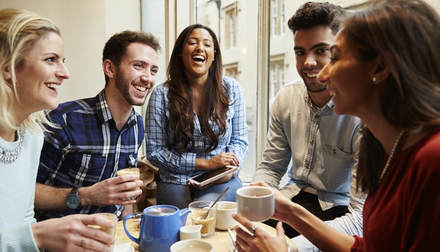 Employees Efficiency Improve After a Coffee Break! Employees Efficiency Improve After a Coffee Break! People of our country can workout wonders when they have a cup of coffee in their hand. School/college students stay awake almost the entire night before exams and working individuals work continuously for more than 20 hours drinking cups of coffee to keep them awake. This is not only prevalent in the IT industry (but quite famous as we all talk about no other industry) but lorry drivers who travel through the night, our security guards who safeguard our homes/offices/ATMs by keeping awake throughout the night and even family/friends who attend to the hospitalized patient stay awake by drinking coffee/tea. The question here is, when a cup of coffee can help an individual stay awake why do people keep refilling their coffee mugs at regular intervals? So, there is a time duration up to which caffeine acts upon our body and loses power after the stipulated time! Caffeine Fame Coffee and tea contain caffeine, a natural substance extracted from coffee/cocoa beans and tea leaves. Caffeine in beverages is not a natural energy-producing substance but a smart worker! All it does is to block the body substance (adenosine) that promotes sleepiness in all of us. Caffeine is an ‘adenosine receptor antagonist’, a ‘stimulant’ and a type of drug that promotes alertness. We use the complex word ‘drug’ to describe caffeine as it stimulates the central nervous system. Once this substance enters our body it raises blood pressure and heart rate, spikes up energy levels and improves your overall mood. All these changes might happen immediately in a matter of minutes and it is not a hard-written rule that every person experiences the same feelings and body changes soon after consumption. Every person experiences the effects in different ways and caffeine has a longer effect on some people compared to the rest depending on how long the substance remains in the body. Caffeine Effect The important question here is how long does the effect of caffeine last? Few minutes, hours or days? Let’s find out! Before that we need to understand the concept of half-life. Half-life is the time required for a quantity to reduce to half its value. This concept can be used in any field/area where the quantity/strength of something decreases over time. Biologically speaking, half-life is the time taken for a substance to lose half its effects. According to the American Academy of Sleep Medicine, caffeine has a half-life up to five hours (Essentially between 3 and 5 hours). For instance, if you have consumed 20 mg of caffeine, you would be left with 10 mg of caffeine after five hours which can stays in your body for a longer time. Caffeine is a substance that starts acting very quickly on your body reaching its peak level in your bloodstream within 15 to 45 minutes. During this time many people might feel jittery, might wish to urinate (due to caffeine’s diuretic effect) and feel suddenly overpowered with energy. That’s why drinking a cup of coffee makes us feel rejuvenated and sleepless within 10-15 minutes after drinking it. Just for clarity, we can compare overconsumption of caffeine with antibiotics. Antibiotics resistance is an ever-growing problem these days as people are taking more and more medications and physicians are increasing dosage and days to combat the power of antibiotics resistance. Likewise, overconsumption of caffeine minimizes its effects greatly. We call caffeine as a drug and when people regularly take this drug (caffeine) on a daily basis its effects become barely noticeable. On the contrary, people with caffeine sensitivity might feel symptoms for several hours or even a few days after consumption. Sleep specialists have also been bothered about the effects of caffeine on sleep patterns and a study by the American Academy of Sleep Medicine has found that caffeine consumption even six hours prior to bedtime can disrupt sleep routines extensively (sleep time is reduced by more than one hour). Based on these results, if your regular sleep time is around 10.30 P.M., you must forego drinking coffee after 4.30 P.M. This might sound impossible as we take a coffee break at work around 4.30-5 p.m. or the first thing we do after coming home is drink some coffee. But, at least let’s try to advance our coffee timings as much as possible to enable our body to get a good night’s sleep. After this, if you still feel like you require some caffeine to boost your energy during late-evenings, go for some black tea (it has half the caffeine quantity of coffee) or green tea (this has only 1/3rd caffeine compared to coffee). Coffee Lovers Coffee accounts for almost 54% of caffeine consumption and tea for 43%. Caffeine can have both positive and negative effects on our body depending on the quantity consumed. Restricting caffeine to less than 400 mg is good for you and it serves your purpose when the beverage is consumed on an intermittent basis. Consuming 500-600 mg of caffeine can make your body build up tolerance toward this drug and reduce its potential advantages. It can also lead to diarrhea, sweating, nausea, increased heart rate, increased breathing rate and muscle tremors. The way you prepare your coffee or tea can also affect the caffeine quantity in it. Limiting Caffeine Intake If you wish to restrict caffeine consumption don’t do it all at once. Slowly reduce the intake quantity and gradually bring it down to your desired quantity. Otherwise you might experience severe withdrawal symptoms such as headache, depression, anxiety, fatigue or drowsiness within 12-24 hours of your last caffeine consumption. The symptoms go away within 48 hours. Find out the quantity of caffeine present in different beverages and try reducing your caffeine levels (if you wish to) by substituting these beverages or reducing their intake quantity with the help of details from the website www.firsteatright.com. Drink a hot cup of coffee/tea and enjoy its effects! Happy drinking! Death is inevitable and each of us are going to die someday. We feel relaxed and peaceful as we are unaware of the future. If you were to know your fateful day which would bring down the curtains of your life, you are doomed forever and start fearing death. But losing someone is even more painful. You miss the person, want him/her back in your life, you cry indefinitely, mourn continuously, feel angry at every one around, feel sad or even lonely. There are no certain specific rules and regulations to mourn. Scientists have taken up this issue seriously and are working out on healthy ways to cope with loss.
Grief is generally associated with death and is a natural response to losing someone or something important to you. People grieve over the death of loved ones, loss of an important job or when they end a beautiful relationship with someone they love. There is no specific way, period or method to grieve and it all depends on the individual. Even cultural beliefs and traditions mold the expression of grief in a person. People belonging to certain cultures express their grief silently and privately while people of other cultures might wail loudly, openly and vigorously. Different Stages of Grieving There are five common stages of grief:
Life Goes On While coping up is painful, research do point out that it can also be the origin for a new purpose in life. Following a few strategies are helpful:
Grief is the process of letting go and learning to accept and live with loss. Grieving is not bad. It is one way of expressing your love over the deceased person and it needs to find a place in your life after you lose a dear one. Ensure that you don’t succumb to alcohol, drugs or become a workaholic to overcome grief. These might subtle your feelings temporarily but will never help you feel better in the long run. Give you kid a smartphone, a tub of butter popcorn and a Play Station-there is nothing more that he/she would want in life. Meeting friends or partying too keeps these young ones talking about the latest games and gadgets in town. Hanging out with friends can make kids less sedentary but triggering their desire to play outdoor with inviting outdoor spaces and parks keeps them physically active and strong, according to new research.
Outdoor Play Causes Positive Influences Playing outside is beneficial to kids in various ways-they are exposed to sunlight (source of vitamin D), breathe fresh air and interact with natural elements all of which accelerate bone development, stronger immune system and physical activity. Engaging in some outdoor physical activity from an early age seems the need of the day due to overwhelming increase in childhood obesity rates and overweight. Current societal lifestyle greatly affects a kid’s childhood experience. Outdoor play time is becoming negligible and kids are locked up inside their houses due to educational pressure or gadget addiction. Bitter to digest but the truth remains that we can only help kids these days live a less-sedentary lifestyle but can never make them lead an active one! Earlier, more the time kids spent with friends, more active they used to be. But now, alone or in a group each one has a smartphone or iPad in his/her hand that keeps him/her occupied oblivious to the surrounding. Children want to live in recluse, but globalization, urban growth and technology also shoulder responsibility for decreasing outdoor activity. Both parents in most families work and children come under the care of grandparents or caretaker. Interactions with strangers, car traffic and other possible hazards are the reasons commonly given by parents for preventing their children from playing outdoors, despite knowing the advantages. Outdoor Activity Study The research followed 431 children aged between 8 and 10 years for at least 10 hours a day and for at least four days over one week. A smaller group of the same children (aged 10-12 years) were followed after a two-year gap. The study found that:
Schools too can contribute towards children’s physical health by arranging more physical-education classes which make children comfortable with physical skills and improve school performance. Exercise is greatly related to improved cognitive ability as explained at www.firsteatright.com and engaging in regular physical activity can help your kid excel academically. Short activity breaks can also be planned in between classes to prevent kids from sitting continuously which might become a lifelong habit later. Playtime is fun time and kids who move a lot, stay out playing a lot and spend minimal time indoors are more creative and imaginative. Rather than joining them in some activity class or summer camps that keep these children indoors, enroll your kids in sports classes, hiking, rock climbing classes or even walkathons to help them relish the goodness of moving more and staying active. Cows ruminate, but what do humans do? Either swallow or bite their food until it’s good enough to push it down their food pipe. We are more concerned about what we eat and mostly ignore what happens once the food enters our mouth. Digestion begins in the mouth and the process of chewing is the first step before the food enters the stomach for complete digestion. Our priority and obsession with what to eat overrules this important phase of how to eat.
Ayurveda, a system of traditional medicine rooted in India, speaks extensively about the benefits of chewing. It even talks about biting every mouthful of food for 32 times for proper digestion. Why 32? That’s the number of teeth every individual has! This school of thought created frenzy even in the USA during the early 1900s when individuals such as Horace Fletcher recommended wild suggestions for complete digestion of food. Nicknamed as the ‘Great Masticator’, this health food enthusiast argued that every bite of food must be chewed 100 times per minute before being swallowed to decrease the quantity of food consumed and increase the energy levels of a person. He even popularized this among famous personalities such as Henry James and John D. Rockefeller who gave a try to his propaganda. Digestive System Science is enthralling and evokes our curiosity constantly. Human body is a great artwork that performs various functions that seem unimaginable. Our digestive system is a brilliant example of this! Humans might design machines or technology to process information and bring out the desired output, but human body processes a plethora of information and nutrients naturally to produce the desired effect on our life. Our digestive system processes the food that we eat into nutrients and energy needed for growth and repair. Mouth, the part of the body that is present at the beginning of the digestive tract, starts the process as soon as food enters it. Chewing breaks down food into a more digestible form. Saliva mixes with these particles bringing it into a form that can be absorbed by the body. Saliva contains lingual lipase (fat metabolizing enzyme) which helps to break down fat before it passes down the body. More the time food stays in contact with saliva, better it is for digestion and even carbohydrate digestion starts. This food form travels through the throat and esophagus reaching the stomach finally. Stomach acts as the mixer grinder converting food into a paste or liquid sending it across to the small intestine. The small intestine releases enzymes to aid in the breakdown of food. The required nutrients from the food you eat are absorbed here and the remaining waste passes out of the body. Chew Your Way to Digestion How healthy we stay depends not only on ‘what’ goes into our mouth but also on ‘how’ well our body absorbs it. Improper chewing can ruin the entire digestion process leaving the body open to health problems such as flatulence, irritable bowel syndrome and similar other ones. Ghrelin and leptin, hunger and satiety hormones don’t show indications until at least 20 minutes after we start eating. Learn how the hunger and satiety hormones play a vital role in affecting weight gain/loss in the human body from the website www.firsteatright.com. Eating fast can fuse these hormones and the person consumes more than what could satisfy his/her hunger even before any signs of fullness are sent from the brain. Improperly digested food leads to inadequate absorption of nutrients and even our stomach tries to stay away from such improperly chewed food particles. Such particles pave way for intestinal bacteria that can cause bloating, constipation, cramps, stomach pain or diarrhea. There are even research evidences that support that chewing food properly can boost our mouth’s immune system and protect us against illness. Yet another study highlighted the benefits of chewing in terms of retained energy levels for performing activities. Chewing food can even promote weight loss! Obese individuals tend to chew less compared to their leaner counterparts. Improving chewing and gut hormones linked to hunger and satiety hormones could prove to be useful against weight gain. That’s because, when some individual chews more, he/she slows the pace of eating. This in turn, decreases the quantity of food that goes into the body. This is even supported by a research that found that slow eaters gained less weight compared to fast eaters. Still, we cannot conclude that our pace of eating and number of times we chew our food act as sole weight-loss promoting factors. Scientists still have inconclusive figures on the ideal number of chews per bite. Until then, it is advisable to eat your food slowly, chew them well wisely and enjoy eating your meal nicely! Please don’t rush your kids to eat their meal faster when they try to chew their food well before swallowing. You might feel strained initially but thinking about all the goodness of properly chewing your food ensures that you stay cool with your kids. During breakfast, lunch or dinner, remind yourself about the benefits of chewing before starting to eat. This will help you stick to your goal and even allocate a couple of more minutes for your mealtime. Some Tips to Chew Your Food Thoroughly
Male to female ratio in almost every professional field is dominated by men and doctors are no exceptions-women doctors are only one-third of the total physicians’ population although there are almost equal admission seats sought by boys and girls during college admission. The best twist to this tale is that, elderly people hospitalized for treatment receive better care and cure under a female physician compared to a male physician. That’s something to cheer for the male-dominated female society! Even more, such patients were less likely to be readmitted or die in the 30 days following discharge when treated by a female physician. Reversed!!! Patients often choose the doctor based on the doctor’s gender. But this is the first-of-the-kind research that suggests that a female physician is the most-effective one to treat any patient. Female doctors face discrimination and disparity in the male-dominated medical field on various fronts-pay scale, promotion, recognition and authority. Such research results might help the medical and healthcare sector to value female physicians and look at them as an integral part of the team. Yet another case of discussion is whether obese doctors can help obese patients lose weight? This discussion is a must-know one and for more details on this, please visit the website www.firsteatright.com. We cannot point out any loopholes and discard this study as unjustifiable or unclear as it was a large one-nearly 1.6 million people were analyzed for death within 30 days and another 1.6 million admissions were analyzed for readmission within 30 days. Although the result shows minor differences they were constantly favorable to female physicians:
The Big Question of ‘Why?’ Result favors female physicians and serves as an eye-opener for the medical community, but this also brings out the most important question-What is the difference in the practice method of female and male physicians that lead to better outcomes for women doctors? Researchers did think upon some of the most-suited reasons:
Getting answers to these questions are important. Meanwhile, instead of defending the male population or opposing the study, it is better to observe the behaviors that these female physicians exhibit and motivate all physicians to follow them. 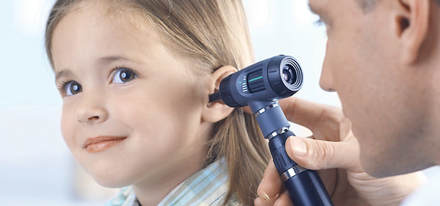 An Otoscope Helps to Find the Bug inside the Ear An Otoscope Helps to Find the Bug inside the Ear During one of the regular night outs in my college days, one of my friends suddenly started complaining of ear pain. Engrossed in watching one of the most hilarious episodes of an English series we ignored her pain and continued laughing. We ignored her pleas until she finally screamed for help holding her ears and was rushed to our campus hospital immediately in the middle of the night. The physician examined her ears and immediately shocked us with his diagnosis-a bug inside my friend’s ears! Yes. You heard it right and there is no need to re-read the diagnosis! Insects are disgusting for many of us and some might even faint when they find bugs crawling around ears of people trying to find refuge inside. Although uncommon, bugs can sometimes enter our ears and stay inside it for a while. Noisy Connection There are quite a few scenarios that pave way for bugs to enter our ears. Many of our apartments house cockroaches, lizards, mosquitoes and flies and seem attractive to quite a few other insects as well. In such cases, it is easy for the insect to crawl into our ear while sleeping and cause discomfort. Insects are commonly seen in plant-dense areas such as forests, gardens, parks and zoos. Gardening is fun and a great way to beautify our lovely homes. But along with fruits, flowers and veggies our gardens keep nurturing insects as well. Visiting hilly areas, dense forests for trekking/hiking purposes or even spending time in our garden attract insects that can fly into our ears. These bugs mostly die immediately after entering our ears but rarely, an unfortunate few find themselves fighting against live bugs inside their ears that keep moving around the ear seeking for a way out! In this case the person experiences extreme discomfort, pain and irritation. A bug in the ear is not dangerous but can lead to complications sometimes. It is better to remove the insect as quickly as possible to avoid further damage. Are You Having A Bug Inside Your Ears? Most times, the person does not see the bug entering his/her ears and realizes its presence only after symptoms start to show up. The most common symptoms include pain and discomfort. Our external ear and the outer side of the eardrum have cranial nerves that act as messengers sending information to the brain. Presence of any external object (for instance, a bug) can irritate these nerves and cause pain. Very rarely, the insect stays alive and keeps crawling inside the ear to find a way out. Depending on the type of bug inside the ear, the bug might also repeatedly sting or bite until it is trapped inside. This can be extremely uncomfortable and painful that can also lead to redness, swelling or discharge (blood or pus comes out which indicate injury to the ear). Adults are quite familiar with the buzzing noise and can readily identify a bug with its buzzing sound and movement. But it is quite difficult to identify the cause of pain in a child’s ear. If your kid keeps constantly scratching or rubbing any of their ears, it might be an indication of a bug inside the ear canal. Do’s & Don’ts For Removing the Bug A bug inside the ear is not life-threatening but has to be done carefully to avoid complications. Do’s
Dal chawal, roti subzi, idli, dosa and variety rice are being substituted with easy-to-grab sandwiches. It is not of concern whether you bring your own sandwich from home or buy one for lunch. The carbon footprint in the sandwich might play a diversified role in greenhouse gas emission, according to a new study.
The A-Z of a sandwich was considered while calculating carbon footprint for the same, right from ingredients procurement, preparation of sandwich and its packaging and food waste produced at home or outside home. 1,2, 3,4,5 Once I Make a Sandwich Light More than 40 different sandwiches and their fillings were examined. Finally, it was concluded that the highest carbon footprints existed for those with port meat (bacon, ham or sausage), cheese or prawns. Many prefer to eat a sandwich for breakfast/lunch/dinner for its easy preparation, less time consumption, variety of ingredients and health quotient. Not one of us could imagine this versatile food to be high in carbon footprint. Sandwich made of eggs, bacon and sausage is said to contain maximum carbon footprint, around the same quantity of CO2 that gets released when you take your car for a 20-kilometer drive. On the contrary, the sandwich with the least carbon footprint includes one of the most adored and easy-to-prepare homemade ham and cheese sandwich. Also, the study found that preparing your own sandwich at home can help reduce carbon emission by 50% compared to the ready-to-eat ones available outside. British’s Greatest Contribution The sandwich food was discovered in Britain and introduced to the world. Obviously, UK is the greatest contributor to this carbon emission consuming more than 11.5 billion sandwiches and contributing to more than 9.5 million tons of CO2 emission, that is equivalent to the emission of more than 8.6 million cars. Isn’t this intriguing? The main factors that increases carbon emission in a sandwich include:
Mankind is never going to leave this versatile food for such reasons and the only way in which we can cut down emission rates is to ignore a few ingredients and prepare your own sandwich at home. Read more on sandwiches and their different preparation methods available at www.firsteatright.com. 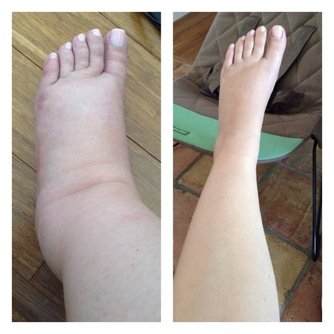 Preeclampsia-affected Feet Versus Normal Feet Preeclampsia-affected Feet Versus Normal Feet Obesity or weight gain is dangerous anytime in life, especially when you are pregnant, unless you are underweight and you strive hard to gain weight in a healthy way (this is extremely rare!). Pregnancy prepares a woman to enter motherhood, a phase that demands uncompromising patience, efforts and energy, all of which are needed simultaneously to handle the journey gracefully. For such strenuous efforts, the lady needs to be fit and healthy primarily. Obesity or unfavored weight gain, both are not going to help the woman in this journey in any way. Rather, such factors only hinder the progress or make a mother’s efforts go in vain. While such are the serious consequences of weight gain, a pregnant woman should never enter the unhealthy weight gain phase any time during her pregnancy period. Otherwise, such higher weight gain during pregnancy increases the risk of preeclampsia in women giving birth for the first time, according to a research. Preeclampsia Preeclampsia is a condition confined only to pregnant women. Occurring after 20 weeks of pregnancy, women affected by this condition face increased blood pressure rates and high level of protein in the urine. Most of these women would have never suffered from high blood pressure until then. Preeclampsia makes itself visible in the form of swelling in the feet, legs and hands. This is also one of the reasons why moms-to-be are advised to never keep sitting continuously for prolonged hours. The scariest part is that, there is no cure for preeclampsia and you become better only when your baby pops out of you! Meeting your physician regularly can keep you from entering into eclampsia, a much more serious condition. Around 10 million women living worldwide develop preeclampsia every year resulting in the death of more than 76,000 pregnant women and 5,00,000 babies. Preeclampsia can cause stillbirths while the mother can suffer from seizures, stroke, kidney failure and other problems. While obesity before pregnancy is an already known risk factor for preeclampsia, the latest study dwells into the effects of obesity/weight gain during pregnancy. Study Results The study involved more than 62,000 Swedish women who were giving birth for the first time and updated their weight gain during pregnancy from time to time. Of them, 4.4 % developed preeclampsia. From other studies we do know that obesity increases the risk of preeclampsia by 2-3 folds and higher the BMI, greater is the risk. What this study helps us understand is that higher weight gain was linked to increased chances of preeclampsia after 37 weeks of pregnancy than with more severe forms of preeclampsia that develop early in pregnancy. Self-motivated Safety Principles that Every Pregnant Woman Must Follow Elders in the family insist pregnant woman to eat as much as possible ignoring her weight concerns. “Eat for two”, “You are bearing a life within you” “No worries, the weight would automatically drop once you start breastfeeding” might be common comments and it’s up to the lady involved to eat wisely and stay healthy. Pregnancy causes many changes in a woman’s life-eating habits, daily routines and most of all, her physical body that undergoes multiple changes to accommodate the unborn child’s needs. While a certain amount of weight gain is recommended during pregnancy, the exact numbers vary from woman to woman depending on her pre-pregnancy weight. The recommended weight gain and BMI for pregnant women worldwide include: Underweight before pregnancy (BMI less than 18.5): Between 12.5 and 18 kilograms of weight gain during pregnancy Normal weight before pregnancy (BMI between 18.5 and 24.9): Between 11.5 and 16 kilograms of weight gain during pregnancy Overweight before pregnancy (BMI between 25 and 29.9): Between 7 and 11.5 kilograms of weight gain during pregnancy Obese before pregnancy (BMI greater than 30): Between 5 and 9 kilograms of weight gain during pregnancy Rapid weight gain (such as 1 kilogram every week) can be an indication of a health problem including preeclampsia. Increased weight gain can also increase your chances of diabetes. Gestational diabetes increases your risk of preeclampsia and can result in the unborn baby putting on a lot of weight. Also, a heavy baby increases the complications for the mother as delivery takes a longer time and the woman finds it more difficult to give birth to her child naturally. A woman should make herself ready for pregnancy by reaching a healthy body weight, stay within normal weight gain ranges during pregnancy by eating healthy food and exercising regularly and deliver a healthy baby at the end of full-term. For any help in losing weight before pregnancy, staying on a healthy weight during pregnancy or post-pregnancy weight loss, get in touch with our reputed nutritionists/dietitians at www.firsteatright.com. Our RDNs can guide you correctly, help you sail through your pregnancy period smoothly and aid you to regain your pre-pregnancy body after delivering a baby in the healthiest way. 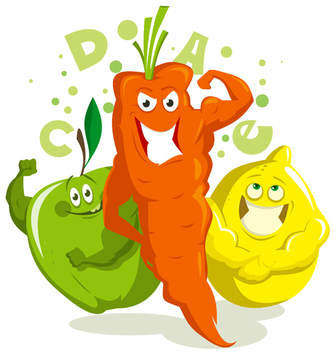 Nourish Your Body with the Right Mix of the Right Nutrients Nourish Your Body with the Right Mix of the Right Nutrients We need none other than a well-balanced diet to supply our body with the essential vitamins and minerals. Just as the name suggests, dietary supplements are those that are intended to supplement a diet but never can be a replacement for foods. Three are quite a few cases where the food we eat do not fulfill all our nutrient requirements resulting in a nutrient deficiency. Given below are few nutrient deficiencies that are more common than we think: Vitamin D Seriously, vitamin D deficiency has become more prominent than ever in all countries worldwide. Most of the individuals do not meet the required vitamin D levels as there are not a whole range of foods that are rich in vitamin D. Sunlight is the most prominent source of vitamin D, a fat-soluble vitamin, and so are fortified dairy products. These products like milk occupy a major role in our daily dietary intake as children. But, as we grow up we start consuming less of milk contributing to decreased vitamin D levels. Calcium is best absorbed by bones in the presence of vitamin D. These days, most of us spend our time indoors devoid of much exposure to sunlight and hence, dairy products are our only lifeline to add vitamin D to our body along with certain mushroom varieties and fatty fish (salmon and mackerel). Read more on vitamin D, its sources and deficiency diseases at www.firsteatright.com. Vitamin E Similar to Vitamin D, this is also a fat-soluble vitamin found in much more food varieties such as nuts, seeds and vegetable oils which fall under the category of healthful fats. It is better to equip your body with vitamin E from these food-based sources instead of consuming pills as large doses of vitamin E pills are associated with greater health risks. Magnesium We mostly focus on vitamins and minerals such as magnesium occupy least priority in our health list despite their numerous benefits. Magnesium is a mineral that helps in more than 300 enzymatic pathways, helps make protein, control blood sugar and blood pressure levels, bone health and needed for making DNA, RNA and antioxidant glutathione. Despite all these advantages, most people aged above 19 years lack in magnesium which is easily available in our every day foods such as whole grains, dark green leafy vegetables and fortified breakfast cereal. Iron Iron supplements amongst the female population is overwhelmingly common as women generally lack in iron due to menstruation. Infants, young children, adolescent girls, pregnant ladies and premenopausal women are included under the maximum-risk category for iron deficiency and iron-deficiency anemia. Animal foods (source of heme iron) such as meat, fish and poultry are preferred over plant foods (non-heme iron) as it is more readily absorbed. It is better to check your iron levels with a physician before you start consuming iron supplements. Vitamin A This fat-soluble vitamin does more than aiding in good vision. It is also necessary for immune function, reproduction and the body’s cellular communication. Animal foods such as milk and eggs are good sources of vitamin A and produce such as green leafy vegetables, orange and yellow vegetables, tomatoes and fruits are great sources of provitamin A. Hence, a combination of both plant and animal foods are a good choice for adding vitamin A to your body. Your body is at rest when you have a good sleep, tucked under the covers and curled up like a baby, but your brain is at work vigorously processing the events that happened during the course of the day. It even tries to get answers to unsolved problems and the best way to remember a newly learnt concept or anything new is to sleep on it. New memories often relate themselves with older ones and you might even get a solution to your unsolved problems or come up with creative ideas while you sleep.
Neural Connections that Connect Learning Processes Memories are results of a learning experience or practical scenarios. Sleep before learning helps the brain to form memories while sleeping after learning something new helps to digest the new information and store it in the brain, almost lifelong. Every day is an opportunity to learn new things and a heap of memories is acquired but most of them are forgotten during the course of day. Memories initially are in a raw and fragile form. Sleep decides over the important memories that should be retained and discards the rest. Some memories are further strengthened and etched forever in our brains. Snoozing puts the brain through different phases of sleep- light sleep, deep sleep and rapid eye movement (REM) sleep which triggers dreams-which keep recurring every 90 minutes. The two stages apart from the REM stage prepare the brain to accept new information the next day and sleepless nights decreases this ability by 40%. The hippocampus (the part of brain responsible for making new memories) is let down when a person lacks enough sleep and memories don’t get stored intact as the brain is not given time to process them before adding new ones! The REM stage provides solutions to many unanswered questions through the day-it links together many different memories in the most unexpected ways and helps in problem solving too. Many emotional conflicts or mental stresses during the day can be calmed or reduced with a good night’s sleep. If your friend comes back and hugs you in the morning after a neck-breaking fight the previous day, don’t be surprised. When a student comes up with a solid answer to your question the next day but did not have much clue on it at the time of questioning, don’t be shocked. All these are dainty works of your REM stage. Research shows that taking a short nap soon after learning a new concept helps the brain to store the concept intact rather than processing it without any nap. A German study has proved that even a 6-minute nap (micro nap) helps people recollect previously-learnt stuff in a better way. Naps are not long enough for the REM phase of sleep to occur and when individuals take a nap long enough for the REM phase, the learning outcomes are even more better. Age-related Sleep Sleep quality decreases as we age. The deep-memory strengthening stages of sleep start to decline in our late 30s. Even a study found that adults above 60 years of age had lost their sleep quality up to 70% or more compared to young adults (18-25 years). Our grandparents and parents often don’t remember misplacing their reading glasses, accuse their children of not sharing many details (although kids would have told them several times) and get irritated as they are forced to search for several things. Decline in sleep quality reduces the number of deep sleep hours and this is a major cause for such impaired memory in older adults. Research is happening in full swing on finding ways out to enhance deep stages of sleep in older adults. More than searching for treatment options to cure memory impairment, trying to find ways to help the person sleep can solve many problems. Youngsters too must sleep properly every day. Night outs before examinations or tests are never going to serve the purpose. A good night’s sleep before the day of examination is as important as a good night’s sleep before the day of study. Cut down on any of these sleeping hours and you can see the consequences of such folly measures for yourself. Heart-Brain Matters ‘Do you follow what your heart says or what your mind says?’ is quite commonly asked which also makes us think if heart and brain are interrelated. Whatever is good for the heart is good for the brain. Exercise is good for the heart and for the brain. It can even prevent or minimize risk of dementia or Alzheimer’s in individuals. Read more on this at www.firsteatright.com. Although brain takes up only 1-2% of body weight, it needs 20% of the cardiac output making it the most oxygen-demanding part of the body. A healthy cardiovascular system indicates a healthy brain. Napping is not the key to success, but it definitely helps to boost your memory and become adept at solving problems. Sleeping well at night helps to promote good health and both together hopefully motivates anyone to sleep well. Pregnancy is a blissful period in the lifetime of a woman as she is cared, pampered and loved by her family members and friends. Even strangers or passerby’s see to that the pregnant lady is comfortable, be it in public transport, restaurants, hospitals and anywhere else too. The only duty of the mom-to-be is to take good care of her health and ensure that the fetus inside her womb gets all possible nutrients. The tips given here can help you stay physically active and stick to a healthy eating pattern not only during pregnancy period but also before conceiving and after childbirth too. This is the right time to start making changes as you become a perfect role model for healthy eating habits for your kids later in life. Stay on a Healthy Weight Pregnancy is a period where doctors insist weight gain in balanced measures to ensure that the baby grows to a healthy size. Too little or too much weight gain can result in health problems for both, you and your baby. Excess weight gain during pregnancy can put you at an increased risk of diabetes, high blood pressure during pregnancy, other health problems and can also make delivery a stinging affair leading to caesarean section (C-section) too sometimes. Staying on a healthy weight gain during pregnancy makes it easier for you during delivery and helps you to get back to your normal shape in a limited time frame. This also puts you and your baby at a minimal risk for obesity-related problems later in life. The amount of weight gain appropriate for you depends on how much you weighed before pregnancy. For accurate weight gain measures for your body type, please visit the website www.firsteatright.com. Always keep in mind that you are not eating for two people as normally conceived by many people. The baby is only about the size of a walnut during the first 3 months of pregnancy and does not need too many extra calories. You need to gain weight very slowly and it is best to work with your physician who can guide you throughout your pregnancy period. But, never try to lose weight during pregnancy. If you lose weight during your initial pregnancy period, please talk with your health care provider regarding this. Eat Balanced Quantities Sticking to the basics of a healthy diet and the right number of calories can help you and your baby with proper weight gain. The quantity of food required depends on criteria such as your weight before pregnancy, age and your potential to gain weight. Most women need no extra calories during the first three months and the last few weeks of pregnancy. Each woman needs different calorie intakes depending on various factors such as being underweight, overweight, obese or having more than one baby. Include a variety of nutritious foods from all five food groups while limiting intake of saturated and trans fats, added sugars and sodium intake. Try including fruits during breakfast, yogurts for snacks, salads during lunch and another portion of steamed veggies for dinner. Special Attention Required for Certain Nutrients & Foods A pregnant woman needs to ensure that she gets plenty of vitamins and minerals like folate, iron and calcium. Physicians advice women in their child-bearing age to take folate supplements even when she is only planning for a baby as this nutrient helps to prevent any birth defects. Some physicians advise pregnant women to take prenatal vitamins every day and eat a healthy diet. Also, some women might experience too much heart burn. In such cases, it is advised that you eat small meals at frequent intervals and avoid spicy or fatty foods. Drink plenty of water before and after meals while avoiding drinking it with the meal. Also, avoid going to bed soon after meal to avoid heart burn. We include certain nutrients in increased portions, likewise we need to avoid certain foods totally to stay healthy. Such foods include alcohol, caffeinated drinks, fish high in mercury content and anything that is not food (some women crave for clay or laundry starch during pregnancy indicating that they lack certain nutrients). Physical Activity is an Integral Part of Pregnancy Just because you are pregnant it does not mean that you must sit back, relax and enjoy 24×7. It is required that all pregnant women (with a few exceptional cases) involve themselves in some physical activity during pregnancy and stay active. Advantages of daily physical activity include:
Staying Healthy After the Arrival of the Newborn Once the baby is out, you would be busy with the baby all through the day. This does not mean that you must ignore your health. You need to take care of your health to take care of your baby. Start planning and take measures to return to your healthy weight to avoid chances of diabetes, heart disease and other weight-related problems later in life. Talk to your healthcare provider about performing physical activity, moderate or intense. You can go for a walk as this is not going to hinder milk supply to your breastfeeding baby in any way. The arrival of a newborn brings plenty of added responsibility to the new mom. You may feel mixed emotions, such as happiness, anxiety and loneliness all at the same time. Don’t get tensed. You will settle down in sometime. Enjoy this phase with your infant. Sleep when your baby sleeps, watch funny movies, go for shopping, spa or listen to music when there is someone to take care of your child and above all, utilize this period to be with your infant as you will never get back such precious times spent with children. Every day is a new dawn for new events to unfurl, sensational news to hit the media/newspapers and an opportunity for new things to be discovered. There are some of the most bizarre things that are said to cause a heart disease and they are listed here:
A loose handshake There was a media report quoting a reputed study which showed that a weak handshake increased the risk of cardiovascular disease and stroke. The media report was an incorrect one, but the study did find that those with lower maximum grip strength were at an increased risk. There is immense difference between grip strength and handshake, and this study showed that a poor grip was strongly linked to dying from cardiovascular disease as blood pressure. In fact, BP readings could at least predict the chances of a non-fatal heart attack or stroke in a better way. The picture is still unclear on ways to improve grip strength or measuring them. Height For years together, there has been widespread news on shorter people at a higher stake for heart disease. While the reason was pointed out at environmental factors such as nutrition, latest research blames it on our genes. It tells that the genes that are responsible for the short height of a person are the same ones that cause a person to suffer from heart disease. Although this is a non-modifiable risk factor, we can focus on other modifiable factors such as smoking and alcohol consumption to reduce our risk of heart disease. Identifying any type of risk factor can help us seek new approaches to prevent and treat heart disease. Anger Media loves to sensationalize things and it is in the gene of media people to hype stuff. News stories suggested that fits of anger increased the risk of heart attack in the following 2 hours by 8.5 times. In paper, there was a study that followed up on 313 patients who suffered from a cardiac event, but it was only a small number of the participants (7) who reported anger before succumbing to a heart attack. Yet another study reported that anger increased risk of heart attack in the following two hours by 4.74 times and stroke risk by 3.72 times. Don’t panic as a five-fold increase in risk would lead to around 1-4 more cardiac events per 10,000 people annually. Increased anger levels might elevate blood pressure levels and cause other physiological changes such as heart rate, which in turn might increase the risk of heart attack. But we need further research to confirm this. Noisy Roads Although a small study predicted the risk of higher noise levels to be associated with a small increased risk of stroke in adults, there are no conclusive evidences supporting this. WHO suggests guidelines on safe noise exposure which again raises questions of increased cardiovascular disease risk. High noise levels might increase blood pressure and stress hormone levels, but WHO clearly states that the effects of high noise levels are small. But noise levels do affect the quality of life and this is explained clearly at www.firsteatright.com. Drinking less than 3 cups of coffee daily Encouraging and discouraging news on beverage consumption is taking the world by storm every single day. A 2013 study on coffee consumption concluded that drinking more than 3 cups of coffee a day increased death rates while a 2014 study found that drinking 3-5 cups per day was linked to decreased risk of cardiovascular disease. Yet another study of more than 25,000 participants in South Korea in the year 2015 too predicted that drinking coffee decreased heart disease risk. Such difference in results might also be due to the changes in the way coffee is prepared and consumed. But we need more hardcore evidence to link coffee consumption with cardiovascular disease prevention. Hormone Replacement Therapy (HRT) HRT is prescribed to treat symptoms of menopause and was also believed to decrease risk of cardiovascular disease. A large study that analyzed more than 40,000 women showed no protective effect of HRT on the heart. In fact, it might even increase the risk of stroke by a small percentage. It is always better to keep your stroke and heart attack risk under control by following an active lifestyle, eating a healthy diet and keeping your blood pressure/sugar levels under control. Pessimism Numerous studies are analyzing the relationship between cardiovascular health and positive/negative attitudes. Studies suggest that optimism paves way for lower risk of cardiovascular disease and pessimism increases risk of smoking, alcohol consumption, high cholesterol, diabetes and depression. Yet another study found that heart attack survivors who were highly optimistic stopped smoking and increased their fruit and vegetable intake. Pessimism is linked to depression and increased risk of cardiac events such as fatal heart attack, cardiac surgery or yet another heart attack. It is better to meet a physician and discuss about your mood problems as it is treatable and stops depression from attacking you. Gum Disease Gum disease has been linked to risk of cardiovascular disease since the 1960s. Some studies show gum disease to play a role in causing cardiovascular disease, some studies show that treating gum disease decreases the markers of inflammation associated with heart disease and some other studies show blood vessel function to improve after treating gum disease. Almost 40% of adults worldwide suffer from gum disease and it is advisable that each of us have a dental check up done regularly and stick to oral hygiene. Longer Work Timings A study analyzed 17 other studies related to working hours and cardiovascular disease. The study found that there was a 13% increase in risk of cardiovascular disease and 33% higher risk of stroke in people who work for more than 55 hours a week compared to those working for the standard 35-40 hours per week. It might be due to decreased time for physical activity when people work for such long hours, increased use of junk food due to unavailability of time to prepare food at home or more stress. While the study results are strong, the exact cause and effect is unknown. What we can clearly say is that each of us need sometime to unwind and relax, look into our general wellbeing and stay peaceful to live a healthy life.  Don't Take Stress! It Increases Risk of Infertility Don't Take Stress! It Increases Risk of Infertility Individuals feel complete when they attain parenthood. Rearing a child and upbringing it into a world-class citizen makes any mom or dad overwhelmingly happy and satisfied. When such is the joy and fulfillment of parenthood, don’t you think every individual living in this universe is entitled and deserving enough to attain the status of ‘mother’ and ‘father’? Sadly, we have entered a phase into which many couples suffer from infertility issues and yearn to be blessed with a lovely little bundle of joy. Modernization, economic improvements, globalization and what not, but the blame still falls mostly on the woman. So ignorant are we from the perspective of fertilization and reproduction! In fact, male infertility contributes to almost 50% cases of global childlessness. Is it necessary just because that the woman bears the child, she must be the sole reason for infertility? Please, move away from this one-sidedness and become aware of all other factors that can contribute to infertility. If you are one of those struggling from infertility, you are not alone and one of every four couples suffer from infertility. Almost more than 180 million couples worldwide are affected by infertility with the main population residing in developing countries. Infertility rates range from 8 -12% in couples in reproductive age worldwide but some regions of the world (such as South Asia, sub-Saharan Africa, Middle East, North Africa, Central and Eastern Europe and Central Asia) have exceedingly high rates of infertility, almost 30%. Infertility Infertility is the inability to conceive after one year of unprotected sex. Fertility rates are inversely proportional to age and infertility in women above the age of 35 is defined as the inability to conceive after 6 months of unprotected sex. For a woman to be fertile, her body must produce healthy eggs that stay inside fallopian tubes waiting for a sperm to fertilize it. If this is successful, the egg joins the sperm and fertilization occurs. This does not happen if there are problems with the fallopian tubes (damage or blockage), endometriosis, ovulation disorders, elevated prolactin, PCOS, early menopause, uterine fibroids or pelvic adhesions involved. Coming to the critical point around which the whole infertility issue seems to revolve nowadays, factors that increase the risk of infertility in women include age (many women wait until their late 30s or early 40s to conceive owing to work prioritization), smoking, overconsumption of alcohol, extreme weight fluctuations (too much of weight gain or loss in a limited time period) and increased physical or emotional stress that results in missed periods. Ageing decreases the chances of delivering a healthy baby in various ways including decreased egg productivity, eggs produced cannot be defined as 100% healthy, the woman is at a risk of health conditions that can cause fertility problems and increased chances of having a miscarriage. Fertilization is dependent on the sperms that try to collage with the egg. In most cases of male infertility, it is the sperm abnormalities that can be pointed out as the sole reason. Other reasons include decreased sperm count, improperly shaped sperms, immobile sperms or impaired delivery of sperms. Paternal age too seems to cause problems with fertilization. More than fertility, paternal age affects the delivery of healthy offsprings as these babies are at a higher risk of birth defects and developmental disorders. Fertility Problems There must be a full stop somewhere for every problem. When the couple feel that their chances of fertilization is minimal or impossible, they visit their doctor who starts collecting both, medical and sexual history from both husband and wife. The doctor then looks into semen analysis, tubal evaluation and ovarian reserve testing. According to the American Society of Reproductive Medicine, only 3% of the infertile couple need advanced reproductive technologies to conceive. If this is true, what about the propaganda surrounding IVF, IUI and all other assistive reproductive technologies used for conception? The world is focused on improving these technologies for better chances of pregnancy but keep forgetting the age-old concept of natural conception through good health and nutrition. ART is acceptable when there is problem with the fallopian tubes or other similar issues, but PCOS, overweight or obesity cannot be considered as a vital factor for pregnancy through ART. Assisted Reproductive Technology (ART) Almost 85-90% cases of infertility can be treated with drug therapy or surgical procedures. Only fewer than 3% of infertility cases require assisted reproductive technology for conception. ART involves all treatment types in which eggs and embryos are handles outside the body. Intrauterine insemination (IUI) and in-vitro fertilization (IVF) are the two commonly used ART methods. IUI involves preparing sperm in the lab and inserting the best sperm into the uterus directly. IUI is usually applied on couples who suffer from poor sperm motility and hostile cervical mucus. For problems such as endometriosis, male factor infertility, premature ovarian failure and other unexplained causes of infertility, IVF might be the best solution. IVF includes: Step 1: Administering medicines to stimulate ovaries and release eggs. Once mature, another medication is given and the patient gets ready for egg retrieval Step 2: The mature eggs are collected for in vitro fertilization which takes barely more than 15-20 minutes Step 3: Eggs and sperm are observed and prepared before combining them Step 4: After combining, the healthy embryo is placed inside the uterus where it will hopefully lead to pregnancy Any remaining good-quality embryos can be frozen for further pregnancy chances, if required. While we talk about the risk of multiple pregnancies involved with IVF, its mainly because we try to increase the chances of pregnancy by transferring more than one embryo. Some of these ART treatments are quite invasive to the woman involved and it is the female partner who bears the burden of the man’s decreased fertility. Nutrition-assisted Fertility There is more and more evidence coming up on the nutrition front relating to fertility. These point to the well-known yet unpracticed fact that nutritional habits have a compelling effect on both male and female infertility. A healthy body weight is the key to foster many negative issues curbing pregnancy and elevate the positive ones that increase the chances of fertilization. It is not only obesity/overweight that greatly affect fertility but also underweight increases the risk of infertility. Overweight/obesity can trigger insulin resistance and polycystic ovarian syndrome (PCOS) in some women too. Also, infertility due to ovulation disorders can prohibit the maintenance of normal body weight. Studies show that total carbohydrate intake and glycemic load of the diet are positively associated with infertility caused due to ovulation disorders. This encourages an individual to choose carbs that have a lower glycemic index such as whole-wheat bread, vegetables and fruits while avoiding white bread, cakes and pastries. Dietary supplements that contain major chunks of iron and folic acid can be effective in treating infertility. Following a Mediterranean-style diet strictly along with consuming high quantities of vegetable oils, vegetables, legumes and seeds along with eating controlled portions of healthy snacks in between increased the chances of pregnancy by 40%. While all these are effective for the female partner trying to conceive, a different set of nutrition goals are necessary for increasing the fertility of the male partner involved. Most of the male fertility disorders are influenced by a free radical process. These not only affect the chances of fertilization but also increase the risk of miscarriage. Zinc, a particularly important nutrient for male fertility must be consumed in enough quantities to avoid impaired potency, reduced sperm count and infertility. Free radicals play a vital role in increasing chances of male infertility and it is up to the male involved to prevent it by taking adequate antioxidants. Men trying to conceive must consume foods rich in zinc, selenium and folic acid to enhance sperm quality. Stay on a Healthy Weight The National Infertility Association of USA reports that 30% of infertility cases are due to weight extremes that can affect hormone levels and curb ovulation. Overweight/obese women who even lose around 5% of their body weight have a higher chance of getting pregnant. At the other extreme are underweight women who experience irregular menstrual cycles. Other people who face increased risk of infertility include individuals participating in high-intensity activities such as gymnastics, dancing, weight lifting, those having an eating disorder or following crash diets. Remember to: Equip your body with enough iron to reduce risk of ovulatory infertility as mentioned above. Ovulatory infertility affects almost 25% of infertile couples and is a prominent cause of infertility. Beans, eggs, lentils, spinach, fortified cereals and whole grains are excellent sources of iron. Consuming vitamin C-rich foods such as citrus fruits, berries or bell peppers helps to absorb maximum iron from the foods that you consume. Folic acid will not make you fertile but any woman trying to conceive must take folic acid supplements after discussing with her healthcare provider to prevent neural tube defects. Eat plenty of dark leafy green vegetables and fortified grains along with a supplement (if prescribed) to pump up folic acid levels in your body. The “Fertility” Diet This diet was published by a team of Harvard researchers and found that women who practiced this type of dietary plan had a 66% reduced risk of ovulatory infertility and 27% reduced risk of infertility from all other causes compared to women who did not follow the diet. This diet proposes ten simple changes to your eating plan to boost fertility levels:
These dietary changes will not work in case of people who are unable to get pregnant because the woman has blocked fallopian tubes or the man’s ejaculation does not carry active sperms. Nutrition and dietary changes can do wonders for couples who suffer from ovulatory infertility, PCOS problems and weight issues, which form the majority of causes for infertility. A well-balanced diet can save you from infertility, a diet rich in antioxidants can prevent or treat infertility and making a healthy diet plan as your lifestyle food habit can go a long way beyond fostering infertility-it can improve your overall body health and make you a fitter person. If you are one of those couples who suffer from infertility problems, try to set right things with nutrition and fitness before opting for assisted reproductive technology. Those suffering from obesity, overweight, PCOS, ovulation infertility and similar other problems can get in touch with a registered dietitian nutritionist at www.firsteatright.com for a solution before jumping over to complicated procedures such as IUI or IVF. IVF or IUI techniques are a boon to mankind, no doubt about it. But why opt for these mentally and physically tiring procedures when the problem involved is not with the fallopian tubes, endometriosis or similar other ones that cannot be solved the nutrition way! Run baby Run, Add more years to life! This is what the latest study screams to people living in this world. This study shows that cardiovascular exercise such as running decreases the risk of death and prolongs life not just based on study results but after an exhaustive analysis of about every study on cardiovascular fitness and life-death ratios.
The same study group had previously analyzed more than 55,000 people between the ages of 18 and 100 years for a period of 15 years. The group acquired data on physical activity using medical history questionnaires and analyzed cause of death during follow-ups. The results showed that running was associated with a 45% decrease in death due to heart attack and strokes, and a 30% decrease in death due to other causes. This result was achieved after considering age, sex, weight and health issues such as diabetes, blood pressure, smoking and alcohol consumption, even when the runner could achieve lesser than 10 kms/hour or the individual ran for less than 10 minutes per day. This is highly possible as there are other studies that show that running reduces the chances of developing cancer, risk of cardiovascular disease and neurological disease (such as Alzheimer’s and Parkinson’s). The reason for the latest analysis even after such a thorough analysis showing positive results on running is due to few unanswered yet important questions-is there a maximum duration above which running becomes fatal? Is running better than walking or cycling? The study group comprised mostly of young or middle-aged males, then what about the rest of the population? From a Different Perspective The above questions prompted the researchers to revisit their study and the research data available on other studies as well. This time, they found that running added three years of life to the lifetime of an individual. For every hour you run, you prolong your life by another seven hours. The benefits nullified after 4.5 hours of running a week and people who ran more than this did not live any longer, did not live any shorter nor were they affected by running for longer hours. It also gave answers to questions comparing running with other cardiovascular exercising proving it to offer better health benefits than cycling or walking. Running is measured in METs (metabolic equivalents) like in a treadmill stress test and it was concluded that lower METs was linked to 16% of all deaths- a data pretty higher than deaths due to blood pressure, diabetes, smoking, obesity and high cholesterol. Two main points to be considered here include:
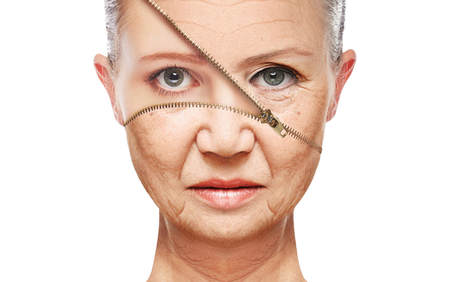 Young or Old, Give Equal Opportunity Young or Old, Give Equal Opportunity Racism, sexism, ageism…and the list is never ending. The present-day world witnesses more people living well into their 70s and 80s than the previous decades with advancements in medical care and science. We celebrate International Day of Older Persons on October 1st every year thanking them for their valuable contribution to the society and the positive impact they have created in each of our lives. This also gives us an opportunity to reflect on the complications and struggles of ageing in today’s world. What is Ageism? The World Health Organization (WHO) defines ageism as the stereotyping, prejudice and discrimination towards people on the basis of age. It can also be termed as ‘age discrimination’ when someone treats you unfairly because of your age. Ageism cannot be curtailed to the older generation and it exists across the life-course with the perception that a person is too old or too young to do something. Media’s Interjection Highly prevalent among societies, ageism is largely accepted and remains unchallenged (unlike racism or sexism) as people subconsciously accept it and move on. Media that includes movies, television, newspapers, popular music and social media play a strong role in projecting ageism and often shows older people on the darker side which can have a serious negative impact from the social perspective. Such negativities can impact the person’s confidence, job, quality of life and economic situation too. The society cannot be 100% blamed for such unfavorable projections of old age as the individual himself/herself also thinks on the same terms as the society and stereotypes his/her possibilities of work and movement. Often, older people feel young, try to stay young and are personally ashamed to grow old or accept their limited skillset that exists with aging instead of feeling proud to age with grace and experience-but again, they cannot be completely blamed as the society too plays a major role in this! Disadvantages of Ageism Ageism is most dominant in the healthcare sector, shopping industry and even in most public places. Few of the most-prevalent ageism examples include:
Problems that Tag Along
Although age discrimination is not considered as serious as other forms of discrimination, it has the same economic, social and psychological impact as any other form of discrimination. Right to equality and human rights demands people to be treated as individuals depending on their merits instead of classifying them based on their age-specific ability, giving them equal opportunities and benefits similar to others in the society and include them in all events as much as possible. Individuals love their home and love to age in the comforts of their home rather than shifting to a community home. Few precautions that are given at www.firsteatright.com must be executed to help these people age safely and gracefully. Never curb someone from participating just because they are aged. Age is only a number. Sometimes, younger people feel stressed, unable to complete simple tasks or become physically inactive while some elderly people still are even smarter than before, fit as a fiddle and have the capability to solve any issue at hand. Age combined with other factors such as sex, race, ethnicity, color, religion, language and culture play a strong role in determining the effect of ageism on the individual. Every country should hold responsibility to cut short the ill effects of ageism and make the world a better place to live for people across all age groups. Its necessary to know one’s blood type as it can prove to be useful during emergency purposes. We write down our blood group in Id cards, our child’s school diary and keep it stored in our phones to save our lives during critical hours. Maybe now we have to write down the child’s blood group in id card and diary to help the school prepare foods and serve them according to their blood group. Yet another hypothesis says that eating for a specific blood type, A, B, AB or O, offers health benefits and helps in weight loss. That’s pretty interesting!
Eat Right for Your Blood Type It was in the year 1996 that a naturopathic physician Dr. Peter D’Adamo popularized a diet based on eating foods for your blood type. This proposal went viral and his book sold millions of copies as people were extremely eager to follow a diet plan suitable for their blood type and stay healthy. Individuals re-planned grocery lists, changed their eating habits, exercised and bothered more about their health. The physician formulated the diet based on the theory that each blood type represents genetic traits of our ancestors and includes information about the type of diet they followed to survive and thrive. The diet recommended for each blood group includes: Type O blood: This blood type is said to be the ancestral blood group, these people were hunter-gatherers and their diet was rich in animal protein. Individuals with type O blood should eat plenty of high-protein foods and meat, fruits, vegetables and fish while restricting intake of grains, beans and legumes. Weight loss diets should include seafood, kelp, red meat, broccoli, spinach and olive oil but limiting intake of wheat, corn and dairy. Type A blood: This blood type evolved when humans began to farm and started eating vegetarian foods. Individuals with this blood group can eat more of fruits, vegetables, tofu, seafood, turkey and whole grains but limit their intake of meat. Individuals planning for weight loss should choose seafood, vegetables, pineapple, olive oil and soy while avoiding dairy, wheat, corn and kidney beans. Type B blood: This type was common among nomadic tribes who consumed ample dairy products. Individuals with type B blood can choose between a diverse classification of foods including meat, fruits, dairy, grains and seafood. Those wishing for weight loss should choose green vegetables, eggs, liver and licorice tea while avoiding chicken, corn, peanuts and wheat. Type AB blood: This blood group is an intermediate one between those for people with types A and B blood and is said to have evolved when people with these two blood types mingled with each other. People with AB blood group can consume tofu, dairy, lamb, fish, grains, fruits and vegetables. A person with AB blood group wishing for weight loss should include tofu, seafood, vegetables and kelp but avoid eating chicken, kidney beans, corn and buckwheat. The recommendations for a healthy lifestyle go beyond food recommendations. It even includes defining specific exercise sets for specific blood types. For instance, people with type O blood are advised to go for high-intensity aerobic exercise and choose some supplements for their sensitive stomachs while those with type B blood should choose low-intensity activities that also includes meditation in the daily routine. How True are these Claims? There is no conclusive evidence showing support for this type of diet and it has been considered as yet another diet fad. While a 2013 analysis published showed that no study demonstrated the advantages of a blood type diet, a 2014 study found that any person following any of the blood type diets showed slight improvement in cardiometabolic risk factors such as cholesterol and blood pressure, but these were unrelated to blood types. There are even challenges that Type A was the first blood group to have evolved and not Type O. If you have been following any of these blood type diets and it works favorable, be happy, follow it and reap benefits. Maybe this diet is the best one for your metabolism and it has got nothing to do with blood type. If you look at the above-given food suggestions for any blood group, the recommendations are healthy and nutritious devoid of processed foods. Maybe that’s the single-most important reason why this diet works without any regard to blood types. Some people might suffer from health conditions and a nutritionist/dietitian is the right person to make the apt recommendations than some diet suggested for your blood type. Get in touch with nutritionists/dietitians at www.firsteatright.com to help you with your diet plan in the right way suitable for your body type. 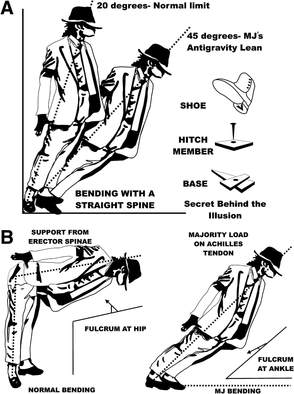 MJ's Shoes Does the Trick to Beat Gravity MJ's Shoes Does the Trick to Beat Gravity Michael Jackson, the ‘King of Pop,’ remains as one of the most-loved musician, dancer and fashionista to the world forever. Fans love his dance moves as much as his music albums and have tried imitating his smooth slides, spins, crotch grab, pelvic thrust and his symbolic moonwalk with little success. Above all these is MJ’s gravity-defying tilt which was exhibited to the audience worldwide in his 1988 music video “Smooth Criminal.” Here, Jackson experimented with an anti-gravity lean where he and his fellow dancers lean forward at a 45-degree angle, far beyond the center of gravity, holding their back straight with feet flat upon the floor staying on these lines until they return to normal positions. MJ: Cheating Gravity? No normal person although extremely fit and healthy can perform the anti-gravity tilt physically without external aid. But Jackson executed the dance move with poise, amazing choreography and unmatched body balance. This is not how a human body works and if so, how was MJ able to accomplish it? Is it some trick, talent or tale? Three neurosurgeons in India tried to analyze and find an answer to this question from a neurosurgeon’s point of view. When our body moves forward with our back straight, the erector spinae muscles that run parallel to our vertebrae support our body adapting it to the changing center of gravity. When the same bend is focused on the toes, these erector muscles are not the major support and the entire strain is over the Achilles tendon and calf, both of which are not really meant for this kind of stress. These surgeons point out that this strain allows for very limited degree of forward bending from the ankle joints and even the best of dancers could only move forward to a maximum of 25-30 degree with great effort and a 45-degree tilt was next to impossible, unless you were Michael Jackson. But even MJ could not accomplish this feat without external help. This aid was in the form of a special shoe that could anchor MJ and his dancers to the floor during the tilt. Stealthy Shoes The US Patent Office describes that the shoes have a specially designed heel slot that can be detachably engaged with a hitch (maybe a nail) projected through the stage surface by simply sliding the shoe wearer’s foot forward and engaging with the hitch member. In simple terms, the nail gets popped at the right moment and is hitched into a special shoe. The beauty here is that, even with such external support most of us cannot perform such moves as the body needs excellent core strength with full-fledged support from core muscles, abs and central trunk muscles. This core strength was MJ’s forte and present in his Achilles tendon. The three neurosurgeons who were also ardent Michael Jackson fans have tried copying the dance move but admit that they have failed miserably. When someone without these muscle strengths try to perform such moves, he/she is sure to hurt his/her jaw, hyperextend the neck and cause serious spine damage. Apart from hurting the spine, there could also be intense damage done to the back, leg muscles and tendons as you’re holding most of the weight with muscles that you normally don’t use in this way. Common people are not aware of these underlying tricks and when they try to copy it, results are harmful as most of them hurt themselves. A Study on Dance A study published in a renowned journal followed three types of hip-hop dancers (poppers, breakers and new schoolers) who were 232 in numbers. During the study period, there were 738 injuries among these dancers. Yet another study witnessed 1,665 injuries among 40 breakdance professionals and 104 amateurs mostly in the wrist, spine, shoulder and ankle. Breakdancing seems to be a high-risk dancing sport as there are more number of injuries and also individuals don’t give enough time for rest before jumping back into training again. The King of Pop is not only an inspiration but also a challenge to the medical fraternity with his incredible mix of talent as well as magic. Trick or talent, new forms of MJ-inspired dance steps and moves offer numerous opportunities to understand modes and mechanisms of spinal injury. Michael Jackson remains an inspiration to dancers worldwide to jump higher, stretch farther and turn faster than ever before. Stress on the spinal column is inevitable and getting hurt is common in dancing. Neurosurgeons nowadays witness numerous cases of spinal injuries and face challenges when these dancers wish to continue dancing soon after receiving surgical treatments for injuries. If you are into dancing and want to strengthen core muscles and abs, get in touch with a registered dietitian nutritionist at www.firsteatright.com. The dietitian can suggest exercises as well as foods for strengthening muscles and making you fit. |
AVOID FRAUD. EAT SMART.+91 7846 800 800
AuthorDietitian & Nutritionist Dr. Nafeesa Imteyaz. Archives
July 2024
Categories
All
Dr. Nafeesa's Blog @blogspot |
- Home
- Written Testimonials
- Consult
- Clinics
- Blogs
-
Diet & Nutrition
- Diabetes Reversal
- IVF IUI not needed for PCOS PCOD Infertility
-
Medical Nutrition
>
-
Disease & Conditions
>
- Infertility | PCOS
- Diabetes Mellitus
- Cholesterol
- Hypothyroid
- Kidney Problems
- Hypertension
- Cardiovascular Diseases
- Liver Diseases
- Gastro intestinal disorder
- Cancer
- Metabolic Disorders
- Orthopedic Disorders
- Eating Disorders
- Dietary Recall
- Weight Record Filled By Clients
- Online Payment Transaction Details
- Online Clients Weight Check Form
- Our Program Package Service Charges
- Weight Record 2017 Clients
- Measurements sent by Clients
- Terms & Conditions Of Payment
- Thanks. Your Form is Submitted
- Video Testimonials
- Lifestyle & Wellness
- Lifestyle & Wellness Blog
- Allergy & Intolerance
- Weight Loss / Gain
- Weight Loss / Slimming Blog
-
Disease & Conditions
>
- Life Cycle Nutrition >
- Sports Nutrition >
- Integrity in Nutrition
- Knowledge Centre
© COPYRIGHT 2022. ALL RIGHTS RESERVED. FRST HEALTHCARE PVT LTD.
Dr. Nafeesa Imteyaz of First Eat Right clinic, is the Best Dietitian Nutritionist in Bangalore. Best Dietitian Nutritionist in Pune. Best Dietitian Nutritionist in Hyderabad. Best Dietitian Nutritionist in Chennai. Best Dietitian Nutritionist in Mumbai. Best Dietitian Nutritionist in Delhi. Best Dietitian Nutritionist in Kolkata.




